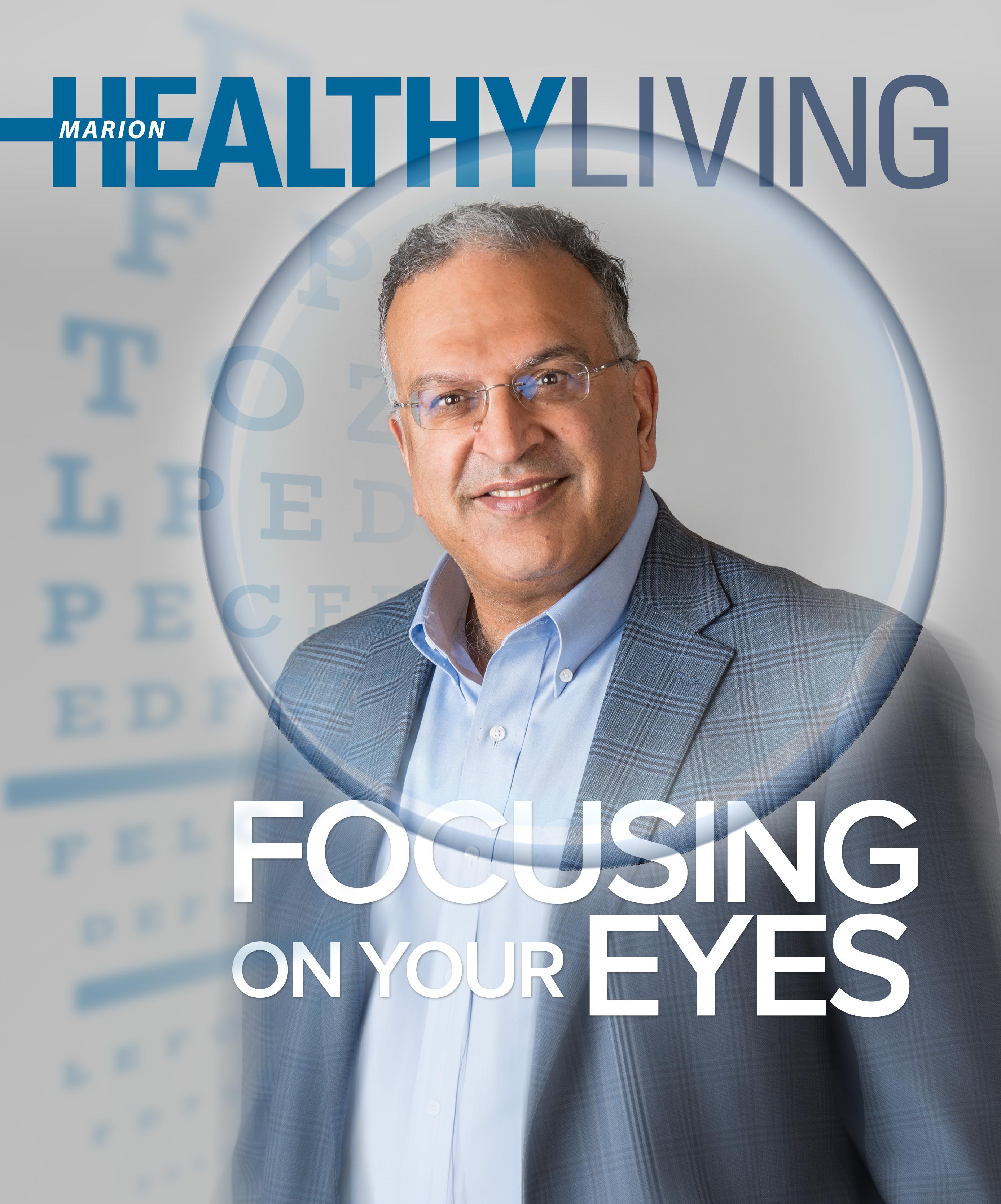
WATER WOES | PRESERVING THE PAST | GIVE IT A ‘TRI’ With Dr. Shalesh Kaushal Of Associated Comprehensive Eye Care + On Trial: Shaping The Future Of Medicine

352.867.9600 Marion Heart Associates.com Dr. Mann P. Singh, MD, FACC Dr. Josef Vesely, MD Dr. Kriti Kumari, MD Diane Meadows, ARNP New patients & most insurances accepted by all providers Serving Ocala and Marion County For Over 25 Years Four providers specializing in Internal Medicine/Primary Care, Cardiology, Endocrinology. | Accredited in Nuclear Medicine, Vascular and Cardiac Ultrasound. arion Heart Associates, P.A. We put our hearts into maintaining your health! SUMMERFIELD OFFICE 10369 SE 175th Place Road, Suite 100 Summerfield, FL 34491 OCALA OFFICE 1805 SE Lake Weir Avenue | Ocala 352-867-9600 JASMINE PLAZA 7750 SW 60th Avenue, Suite B | Ocala 352-509-7800 COMPLETE DIAGNOSTIC FACILITY


FHWFD-10567 And a network of specialists to get you there faster. Emergency Care Heart & Vascular Women’s Care Primary Care Orthopedics Bariatrics FHOcala.com (352) 467-7850 From check-ups to giddy-ups.
Dr. Andrew Franklin is from Essex, UK. He earned a 1st class master’s degree in chemistry from the University of Exeter (UK) in 2002 and a PH.D. in organic chemistry from the University of Sheffield (UK) in 2007. From 2007-2010 he performed post-doctoral research in organometallic chemistry at Florida State University, Tallahassee, FL. Dr. Franklin then attended Kent State University School of Podiatric Medicine in Cleveland, OH, receiving a Doctor of Podiatric Medicine degree in 2014 and then completed a three-year foot and ankle podiatric medicine and surgery residency at Mercy Health Foot and Ankle Residency, Cleveland, OH. Dr. Franklin is ABFAS board forefoot and rearfoot qualified and enjoys practicing in all areas of podiatry, including diabetic preventive care, wound care and forefoot and rearfoot surgery. He is married with two young boys and looks forward to becoming more actively involved in our community. In his spare time, he enjoys spending time with his family, running, reading and cooking.


352.867.0024
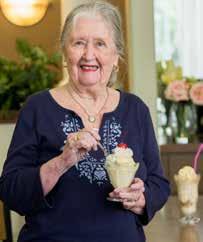

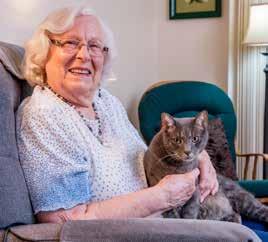
2825 SE 3rd Ct. | Ocala FamilyFootAnkle.org

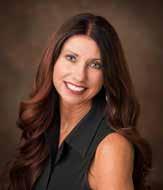



2 healthyliving magazines.com NOV ’18 Affordable Luxury Living... You Deserve It! Retirement Living At Its Best • Chef-prepared dining twice daily • Housekeeping and linen service • Full-service beauty salon and barber shop • Monthly rental, including utilities • Outings and daily engaging activities • Membership to AJ’s Fitness Center is included! Not-For-Profit Provider 3211 SW 42nd Street, Ocala, FL 34474 352-237-7776, Ext. 254 www.hawthornevillageofocala.com Call today for a complimentary lunch or dinner tour! Call PCHWellness! No Insurance No Problem • Primary Healthcare Needs • Weight Loss Programs • Nutritional Counseling • Discounted Labs and Imaging • Hormone Replacement Therapy • Various Aesthetic Treatments Board-Certified Adult and Geriatric Nurse Practitioner Call & let's talk about your membership. 352-821-0188 108 North Magnolia Ave, Suite #324 | Ocala FL 34475 pchwellness.com Dr. Cindy Grow, DNP ● P r i maryCar e Member s pih ● as low as $50 MONTH Sheila Noroozi, DPM, FACFAS Diplomate, American Board of Podiatric Surgery Board Certified in Foot & Ankle Surgery WE NOW HAVE DIGITAL XRAY ON PREMISES Treatment of Common Ailments such as Bunions, Hammertoes, Heel Pain, Fractures,
Athlete’s Foot, Neuromas, Tendonitis • Ankle Arthroscopy • Laser Foot Surgery Sports Related Injuries • Children’s Foot Care • Custom Orthotics
WELCOMES ANDREW FRANKLIN
Sprains,
PROUDLY
Dr. Noroozi
Dr. Telusma
› By Cynthia McFarland the
Thinking
› By Cynthia McFarland front

HEALTHY beat
› PAGE 5
TRENDS | NEWS | PEOPLE
By Cynthia Brown, Laurel Gillum, JoAnn Guidry, Bonnie Kretchik, Cynthia McFarland and Katie McPherson

› 6 What to do this month.
› 7 Healthy Living’s Hometown Hero.
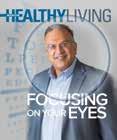
› 8 Livin’ the good life.
› 9 Evening lecture at IHMC.
› 10 Enter the Test Lab.
› 11 Growing up healthy.

› 12 All around town.
HEALTHY body
› PAGE 15
WELLNESS | FITNESS | BEAUTY
By Robin Fannon, Jim Gibson, John Jernigan, Lisset Lanza and Katie McPherson
› 16 Flavors of fall.

› 17 Gadgets for the gym.
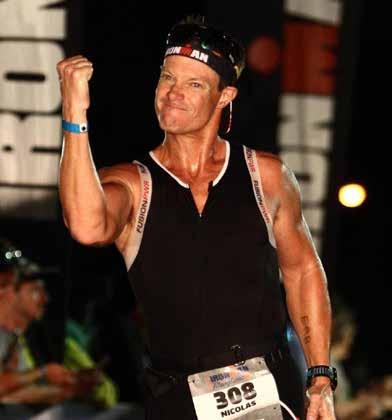
› 18 What to know about open enrollment.
› 20 A voice on vaping.
HEALTHY vibe
› PAGE 43
MIND | HOME | LIFE
By Lisset Lanza & Katie McPherson
› 44 A digital addiction.
› 46 Winter packing woes.
› 47 Listen up!
› 48 Feel-good bags.
NOVEMBER 2018 PAGE 03 on the cover Dr. Shalesh Kaushal of Associated Comprehensive Eye Care
WATER WOES PRESERVING THE PAST GIVE IT A ‘TRI’ With Dr. Shalesh Kaushal Of Associated Comprehensive Eye Care + On Trial: Shaping The Future Of Medicine for
of
photographer: John Jernigan
the sake
science
› PAGE 24
the
of
How everyday people help change
course
scientific discovery.
story
you
of
› PAGE 28
of writing a memoir? There are some talented local professionals available to help. ›
lies
aquifers are both vital and vulnerable.
By Nick Steele what
beneath › PAGE 32 Florida’s
of the pack
38
Triathletes Club leads the way.
be an insider! Sign up for our free e-newsletter and stay tuned for new giveaways each month. Visit us on Facebook at Healthy Living Magazines or at healthylivingmagazines.com
› PAGE
Ocala
› By Jim Gibson
PUBLISHER
Kathy Johnson kathy@healthylivingmagazines.com
OFFICE/PRODUCTION MANAGER
Cynthia Brown art@healthylivingmagazines.com
EDITORIAL
EXECUTIVE EDITOR
Karin Fabry-Cushenbery karin@healthylivingmagazines.com
MANAGING EDITOR
Melissa Peterson melissa@healthylivingmagazines.com
SOCIAL EDITOR
Ron Wetherington
SOCIAL MEDIA SPECIALIST
Vianca Torres vianca@ocalastyle.com
SOCIAL MEDIA ASSISTANT
Elizabeth Martinez
FOOD & LIFESTYLE CONTRIBUTOR
Robin Fannon
CONTRIBUTING WRITERS
Jim Gibson
Laurel Gillum
JoAnn Guidry
Bonnie Kretchik
Cynthia McFarland
Katie McPherson
Nick Steele
Lisset Lanza
ART
art@healthylivingmagazines.com
CREATIVE DIRECTOR
Jessi Miller
GRAPHIC DESIGNER
Kristy Taylor
PHOTOGRAPHERS
John Jernigan
Sheila Hartley
Ralph Demilio 123rf.com
SALES DIRECTOR OF SALES
Dean Johnson deanjohnson@healthylivingmagazines.com
SALES MANAGER
Sharon Morgan
ACCOUNT EXECUTIVES
Evelyn Anderson
Kyle K. Bernhard
Skip Linderman
Peggy Sue Munday
Cecilia Sarco
Lori Tani
Crystal Gale Tronnes
DISTRIBUTION
Dave Adams
Debra McQueen
Rick Shaw
O CALA PUBLICATIONS, INC.
o: 352.732.0073 › f: 352.732.0226

ADVISORY BOARD
HEALTHY LIVING MAGAZINE has brought together a group of medical experts and community leaders to serve on our advisory board and share their expertise and insight with our readers.
Christy Jergens, APR Public Information O cer FLORIDA DEPARTMENT OF HEALTH IN MARION COUNTY
Nicolas Blaser Vice President – Business Services O cer
BB&T
Michael Holloway, M.D. Physician-Directed Weight Management & Medical Aesthetics LIFESTYLE SOLUTIONS MEDSPA

Mark Jank, M.D. Ophthalmology OCALA EYE



Ashley Cauthen, M.D. Cosmetic And Clinical Dermatology MIDSTATE SKIN INSTITUTE

Brittney Marthaller Director, Marketing & Public Relations OCALA HEALTH


Kristina Donohue Director of Mission Advancement THE CENTERS
Derek Farr, D.O. Orthopedic Surgeon TWIN PALMS ORTHOPEDICS
Navinderdeep Nijher, M.D. Plastic Surgery OCALA PLASTIC SURGERY



Chris Okonkwo, M.D. Pediatrics

CHILDREN’S HEALTH OF OCALA
Cindy Grow, DNP, ARNP, AGPCNP-BC Adult & Geriatric Integrative Medicine

PATIENT CENTERED HEALTH CARE & WELLNESS
Jayanti Panchal, M.D. Internal Medicine and Medical Weight Management SUCCESS BY DESIGN
4 healthyliving
NOV ’18 MARION
magazines.com
1007 E. Fort King St., Ocala, FL 34471 healthylivingmagazines.com HEALTHY LIVING MAGAZINES / NOVEMBER 2018 / VOL. 6, NO. 11 Published monthly by Ocala Publications, Inc. All contents © 2018 by Ocala Publications Inc. All rights reserved. Nothing may be reprinted in whole or in part without written permission from the publisher. For back issues or advertising information, call (352) 7320073. Return postage must accompany all unsolicited manuscripts and artwork if they are to be returned.
OCALA MARIONCOUNTY CHAMBER&ECONOMIC PARTNERSHIP (Kerning50pt) MOVING FORWARD MOVING FORWARD MOVING FORWARD COLORS FONTS GREYSCALE LOGOS TAGLINE & ARROW OcalaPublications
Manuscripts are welcomed, but no responsibility can be assumed for unsolicited materials. “Promotional” and “Promotional Feature” denote a paid advertising feature. Publisher is not responsible for claims and content of advertisements.
the blood sugar battle
Over 30 million Americans, or close to 10 percent of the population, currently have diabetes, with over 1.5 million new cases diagnosed annually. Diabetes was ranked as the seventh leading cause of death in 2015, with over 250,000 deaths being linked to the disease and costing the nation $327 billion in medical costs and reduced productivity. The symptoms of both type I and type II diabetes can be similar and often so mild they go undetected. These include frequent urination, feeling hungry or thirsty often, fatigue, blurry vision, cuts or bruises that are slow to heal, weight loss even though you’re eating more (type 1) and tingling or numbness in the hands or feet (type 2). Early detection is key to successful treatment and management. Although type 1 diabetes is a condition that patients primarily develop in early childhood, type II diabetes can be avoided in many cases with lifestyle choices.

These include:
1. Getting plenty of physical activity
2. Eating enough fiber and whole grains
3. Losing excess weight
4. Avoiding diet fads and eating a variety of food from the di erent food groups
For more information on diabetes diagnosis and prevention, visit the American Diabetes Association at diabetes.org
TRENDS NEWS PEOPLE HEALTHY PAGE 05
Source: diabetes.org
day by day
Fun events, helpful tips and monthly to-do’s for November
Organize a family dinner with extended family.
Salsa Casino (every Friday, 6:45pm) at Studio SC: Barre, Yoga, Fitness
Don’t miss the Ocala Fitness Festival at Citizens’ Circle.
Daylight Savings Time Ends
Take a 30-minute walk in nature.
Grab a pumpkin spice latte.
Take Control of Your Diabetes Support Group at the Senior Wellness Community Center*
VETERANS DAY
Veterans Day Celebration at Veterans Memorial Park in Ocala from 11am-5pm
Make plans to attend Light Up Ocala on the downtown square this weekend.
Diabetes Skills Workshop and Seminar at the Senior Wellness Community Center*
Low Back Pain and Sciatica Workshop at the Senior Wellness Community Center*
Check out Beyond Glory at the Ocala Civic Theatre (runs Nov 15-18).
Senior Lifestyle & Injury Prevention: Tips for Preventing Falls seminar at the Senior Wellness Community Center*
Big Hammock Race Series Race #4: Sangria 5K Dash
Host an adult craft and wine party.
First day of fall break for Marion County Public Schools. Strength training
Unclog sink and tub drains. Hip-Hop Yoga Flow at Studio SC: Barre, Yoga, Fitness (every Monday, 6:45pm
Make plans to attend Symphony Under the Lights at Tuscawilla Park this weekend.
Chair Yoga at Blissful Life Corporation (every Wednesday, 10:30am)
Flag football at Jervey Gantt Park
Make plans to see Ralph Breaks The Internet (opens November 23).
Thanksgiving
23rd Annual Frank Deluca YMCA Turkey Trot 5K & 10K at the Frank DeLuca YMCA Family Center
Last day of fall break for Marion County Public Schools.
Critter Trail 5K Run/ Walk at Silver Springs State Park
Sweep leaves off the roof, and rake the yard.
Visit Ocala Downtown Market this weekend (every Saturday, 9am-2pm).
After Dark in the Park Movie Series: Beauty and the Beast in Tuscawilla Park
Invite friends to and host a “pie-off.”
› Pepperidge Farm’s Pumpkin Cheesecake Cookies and Spice Swirl Bread


› Starbucks’ Pumpkin Spice Ca e Latte K-cups

If you haven’t hopped on the pumpkin spice bandwagon yet, have you really experienced autumn? Check out some of our favorites.

› Auntie Anne’s Pumpkin Spice Pretzel Nuggets
› Natural Bliss Pumpkin Spice Creamer
› Starbucks’ Pumpkin Spice Latte (obviously)
*To register for Ocala Health events, call (800) 530-1188 or visit OcalaHealthSystem.com
6 healthyliving magazines.com NOV ’18 SUNDAY MONDAY TUESDAY WEDNESDAY THURSDAY FRIDAY SATURDAY 1
4 5 6 7 8
11 12 13 14 15
2 3
9 10
16 17 18 19 20 21 22 23 24 25 26 27 28 29 30
beat HEALTHY CALENDAR
spicin’
it up
HOMETOWN HERO
be the change
Kari Coates, recreation coordinator at the Marion Oaks Community Center, is our Healthy Living November Hometown Hero.
› By Cynthia McFarland
› Photo By John Jernigan
The way Kari Coates sees it, you get out of life what you put into it. If you want to see things change for the better, you have to work for that change.
“That’s the way I was raised. If you want your community to be better, you have to take steps to make it better,” says Kari.
Most of her extended family has called Ocala home for the past 50 years. She herself moved here from Ohio in 1999.
“I’m proud to live in Marion County,” says Kari, who works for Marion County as a recreation coordinator for MSTU Marion Oaks Recreation developing activities for the community.
Kari has made a world of di erence at the Marion Oaks Community Center. Her first e orts were volunteering to run the Mommy and Me program, helping young mothers and their children. After being hired to assist the existing recreation coordinator and later becoming recreation coordinator for MSTU Marion Oaks Recreation, Kari made it her goal to enrich the Marion Oaks community with programs to benefit everyone, from kids to seniors.
Among the various health and wellness programs, fundraisers, community events, school outreach and recreation programs, Kari has helped make programs available for the residents of Marion Oaks. And amazingly, she’s done it all while

battling breast cancer.
After a mammogram and subsequent biopsy in October 2015 revealed she had triple-negative breast cancer, Kari faced multiple surgeries, including a double mastectomy the following year, and aggressive treatment with both chemotherapy and radiation.
“I had really great doctors and nurses at both Ocala Oncology and Robert Boissoneault Oncology Institute, including Dr. Robert Gallinaro, and the support I received from the community and my family and friends was unbelievable. To this day, it still makes me cry to think about it,” says Kari with a catch in her voice. “I don’t know where my husband, Monte, and I would be without them. I have great parents who have always been there for me. The community held numerous fundraisers for
us. There wasn’t a week that there wasn’t an envelope in my mailbox. This community will always be family to us.”
Since her treatments concluded, Kari has had what she hopes is the last of her surgeries. Doctors continue to monitor her closely.
“I’m staying positive that I’m going to see my kids graduate,” says Kari, the mother of Mason, 12, and Evan, 10, and stepsons Austin, Jacob and Christian.
“If you don’t think positive, that can be your downfall. You can’t let yourself fall into wallowing and let it take over your life,” she observes. “I’ve been fortunate to have a lot of people standing by me. One of my doctors, Dr. Chandranath L. Das, gave me the best advice: ‘It is what it is. You can either deal with it and move forward or shut down.’ I’m so grateful for that advice.”
NOV ‘18 › healthyliving magazines.com 7 beat HEALTHY
a welllived life
104 years and still going strong
›
By Cynthia McFarland
Many people never live past their eighth decade, let alone hit the century mark. Carl Tomlin has spent a lifetime making the most of each day, and to those who know him, it’s no surprise that this charming gentleman celebrated his 104th birthday this past September 2.
A living testament to what it means to live well, Carl has routinely done all the things doctors recommend for staying healthy—physically and mentally.
Physical activity has been a routine that began when he was growing up in the outskirts of Detroit, Michigan.
“I think I’m a product of the era that I lived through, starting with walking to school when I was a child. I was always very active in sports, Boy Scouts and such,” says Carl, a dedicated swimmer from childhood all the way through his late 90s.
An avid reader, his favorite topics have been history and public a airs. Although his eyesight isn’t what it used to
be, Carl still reads regularly but for short periods with time to rest his eyes in between.
He believes in being a “moderate” eater.
“I’ve followed the saying, ‘One should eat to live, not live to eat.’ I’ve never indulged in huge meals except at the holidays,” says Carl, who admits to having a sweet tooth and enjoying a serving of chocolate ice cream every day.
Carl and his late wife, Virginia (“Ginnie”), were married for 72 years. Ginnie was 98 when she passed away in 2014. The couple has five children (three sons and two daughters) and four grandchildren.
Carl served his country in the U.S. Navy and was active duty during WWII. He took part in five major invasion e orts of Japanese-held islands, including the initial invasion of Guadalcanal and the final invasion of Okinawa, and still has vivid memories of those events. He was in the Naval Reserves for 24 years and

retired in 1975 as a commander.
Carl worked for the Navy Department in Washington, D.C. as deputy assistant to the Military Sealift Command. It was after retiring from this position 30 years ago that he and Ginnie moved to Florida in search of a milder climate and all the activities our area o ers. Because of their passion for dance, they founded the ballroom dancing club at Oak Run, something they were active in for about 15 years.
In addition to extensive travel across the country and around the world, Carl and Ginnie also lived for a time on the island of St. Croix in the U.S. Virgin Islands.
Carl has lived an extremely full life and continues to do
so. He moved to Canterfield of Ocala, an independent and assisted living community, in the spring of 2018.
“Carl’s quick wit leaves you laughing, and his wisdom and sharp mind leave an everlasting imprint long after your conversations are over. He has not only been a blessing in my life but also in the lives of our residents and sta here at Canterfield of Ocala,” says Shilo Montes, marketing director assistant at Canterfield.
“I enjoy my routine, meals and conversations with the other residents. Where I am now is one of my favorite places,” smiles Carl, who continues to inspire people decades younger.
8 healthyliving magazines.com NOV ’18 beat HEALTHY PEOPLE
“
“
Carl’s quick wit leaves you laughing, and his wisdom and sharp mind leave an everlasting imprint long after your conversations are over.
- Shilo Montes
Photo by Shilo Montes
a step ahead
William Dalton, M.D., Ph.D., discusses moving from reactive to proactive medicine at IHMC’s Evening Lecture Series on December 4.
 ›
By Cynthia McFarland
›
By Cynthia McFarland
Imagine a world where we could prevent cancer rather than have to treat it. We’re on the way to making this a reality, thanks to modern medical technology and extensive data gathered from thousands of past and present cancer patients.

The idea of taking a proactive—rather than reactive—approach to health care, starting with cancer, is the goal of William Dalton, M.D., Ph.D., a medical oncologist who holds 10 U.S. patents and whose career has been dedicated to cancer treatment, research and patient databasing.
Dr. Dalton joined Mo tt Cancer Center in Tampa in 2002. In 2006, he founded M2Gen, a health informatics and datamining company that uses data from consenting patients to examine patient needs and collect evidence to better predict and meet future needs. M2Gen advanced both the Total Cancer Care Protocol, a standard system for tracking patient molecular, clinical and epidemiological
data, which follows the patient throughout his or her lifetime, and the Oncology Research Information Exchange Network (ORIEN), which data-partners with the nation’s leading cancer centers and major biopharmaceutical companies.
“What started at Mo tt in Tampa has been adopted by 18 other cancer centers across the United States and has become a huge national e ort,” says Dr. Dalton. “This enhances tremendously our ability to anticipate the needs of patients, including predicting which clinical trial may be best for a patient.”
Thanks to the Total Cancer Care Protocol, there are now 250,000 patients who have consented to be followed and to donate tissue (both tumor and normal cells), making this one of the world’s largest clinically annotated cancer tissue
repositories and data resources for cancer research.
Dr. Dalton points out that the patients who have agreed to be part of this massive study play a pivotal role. He considers them partners with clinicians, pharmaceutical companies and regulators, like the FDA, all with the same goal: that one day cancer— and other health issues—can be predicted and best treatments provided based on evidence of what works best for each patient.
“By following cancer patients through their lifetimes, we can identify their needs and, in an evidence-based fashion, learn how to meet those needs for the best outcome,” notes Dr. Dalton. “We believe we can predict need before the need occurs, and that anticipation is how we can go from reactive to proactive medicine. This will revolutionize how cancer is treated, and the evolution of that e ort could extend to all health care.”
Join Dr. Dalton as he speaks on “Moving from Reactive to Proactive Medicine Through Data Science” when he comes to the Institute for Human and Machine Cognition in Ocala.
Learn more › IHMC EVENING LECTURE
SERIES › William Dalton, M.D., Ph.D. › Tuesday, December 4, from 6-7pm. Doors open at 5:30. › ihmc.us › (352) 387-3050
NOV ‘18 › healthyliving magazines.com 9 beat HEALTHY HAPPENINGS
test lab: youtube makeup tutorials
Do you ever see trendy foods, beauty techniques or odd products and think “now that I have to try?” In this month’s Test Lab, I’m trying to make myself into a Kardashian by following YouTube makeup tutorials. ›
By Katie McPherson
THE CLAIMS
There are hundreds of thousands of makeup tutorial videos on YouTube, teaching everything from the basics of applying foundation to insane artistry. Watching YouTube is how I, and many others in my generation, learned to do our makeup (#raisedbytheinternet). But one thing I still haven’t mastered: eyeshadow. So, I’m going to follow a beginner’s tutorial on the halo eye, a supposedly easy way to get glam in a short amount of time. This could be lovely, or it could look like a black eye. Only time will tell.
THE EXPERIMENT
I opted to follow a tutorial by RawBeautyKristi on doing a halo eye—darker on both corners, bright and metallic in the middle. I’ve never done this sort of look before, so I watched the video before committing to make sure I had the right tools and eyeshadows. All I needed was concealer, one flu y eyeshadow brush

THE RESULTS
Overall, I’m super happy with the results! I’m no pro by any means, but I now feel like dragging my husband to the nearest place with cocktails just so I can take my face out on the town. That said, I see a thousand ways this could have gone wrong if I weren’t used to following tutorial videos. With that in mind:
1. Be sure to watch a few videos about your topic of choice before starting. Find one that you really understand and think you can accomplish so you set yourself up for success.
and a flat concealer brush (or a craft paintbrush, honestly). And of course, shadows and mascara.
I watched the video all the way through once to see how Kristi did the look first, and then played and paused as I went to make sure I was getting it right along the way.

2. Look for a YouTuber who has a similar ____ as you. If it’s an eye look, you want someone with similarly sized and shaped eyes. If it’s about foundation, find someone with the same type of skin (oily, dry, green and alien-like, whatever) and stick with them. The makeup artists who have these things in common with you will demonstrate the ways to make a look work for you.
3. Like cooking with a new recipe, watch the video all the way through before beginning. This ensures you have everything you need before you’re halfway done, looking like an angry raccoon, raging because you don’t have the right brush. This has been me. Don’t let it be you.
10 healthyliving magazines.com NOV ’18 beat HEALTHY TEST LAB
growing healthy children
one in 59 children with having autism spectrum disorder.
“The AAP recommends both developmental monitoring or surveillance and developmental screening for all children,” says Roseann Fricks, CEO of Early Learning Coalition of Marion County Inc. “But many children are not identified until school entry, which means too many children miss the opportunities provided by early intervention services.”

Enter Help Me Grow Florida, a comprehensive and integrated statewide system to address the need for early identification of developmental and/or behavioral concerns. Children, birth through 8, and their families are referred to community-based support and services, depending on their specific needs. The HMG system has been proven to decrease medical costs and build family resilience. Through a state grant, ELCMC contracts with The Children’s Forum and became a Help Me Grow a liate in July 2018.

2-1-1 through United Way. HMG is available to assist parents 24 hours a day, seven days a week. We collaborate with many community programs, including Healthy Start, Children’s Home Society, local pediatricians and many others.”
On November 17, HMG will host its first Books, Balls & Blocks. The free community outreach event will be held at the Marion County Public Library Headquarters from 10am-1pm. There will be fun activities and free developmental screenings for children, birth through 8.
“The need in our community for the HMG program was evident right away,” says Cox. “In our first month, we served 11 families. Now we average between 15-20 families a month. The HMG program is open and available to everyone at no cost. We encourage families to take advantage of the resources available.”
According to the American Academy of Pediatrics, one in four children, ages 0-5, are at a moderate to high risk for developmental, behavioral or social delay. Additionally,
about one in six children, ages 3-17, have developmental disabilities. The Centers for Disease Control and Prevention’s “Learn the Signs. Act Early” campaign identified
“We provide free developmental screenings with follow-up referrals to local community partners,” says Tonya Cox, the ELCMC Help Me Grow Care Coordinator. “Our services help identify early developmental concerns in children and connect families with services they need. All our HMG material is in English and Spanish. HMG is available by calling ELCMC directly or by calling
Learn more › TONYA COX, HELP ME GROW CARE COORDINATOR › (352) 369-2315, ext. 225 › Monday-Thursday 8:30am5pm, Friday 7am-3:30pm › elc-marion.org/help-me-grow
Want to go? › BOOKS, BALLS AND BLOCKS › Saturday, Nov. 17 at the Marion County Public Library Headquarters › 2720 E Silver Springs Blvd., Ocala › 10am-1pm › Free fun activities & developmental screenings (ages birth-8)


NOV ‘18 › healthyliving magazines.com 11 beat HEALTHY GOOD DEEDS
Local Help Me Grow Florida program promotes healthy early development for every child in Ocala and Marion County. › By JoAnn Guidry
the centers grand affair
The Centers fundraising party at On Top of the World’s newly renovated Circle Square Cultural Center featured cocktails, dinner, a silent auction and music from the Atlantic City Boys. The event recognized three community figures who have helped those struggling with wellness and mental health issues or substance abuse: Ocala Police Chief Greg Graham, Executive Director of FreeD.O.M. Clinic Ann Burnett and Chairwoman of the Board for Project Hope Patti Lumpkin.
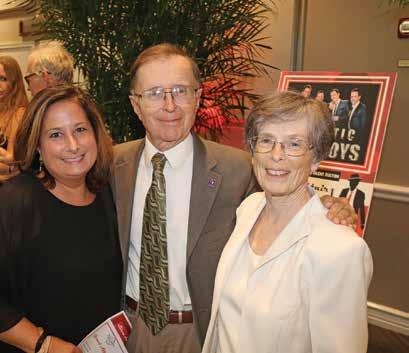



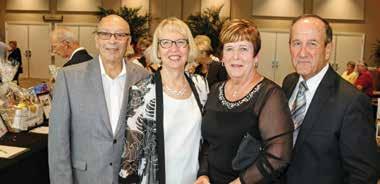



12 healthyliving magazines.com NOV ’18 beat HEALTHY OUT & ABOUT
Photos by Ron Wetherington @ Circle Square Cultural Center
Lori Mandio, Michelle Boone, Debbie Miller
Logan McDonald, Olana Osborn
Heather James, Cash and Gwynn Pealer
Stephanie and Kaylee Baracskay
Tommy and Renee Thompson, David Messana
Stephen and Renaye Quintyne, Bethany and Jamie Ulmer
Don and Harolyn Scott
Vincent and Michele Ciccazzo, Deb and Kip Kern


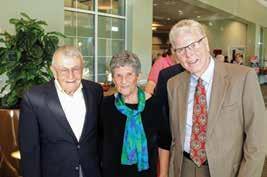
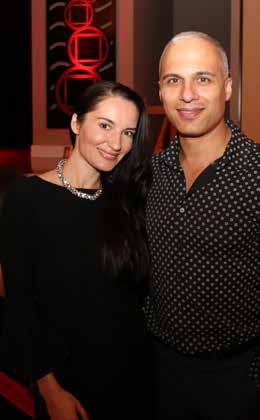
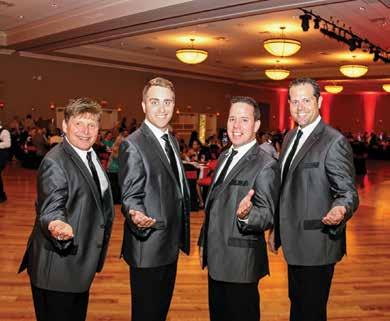

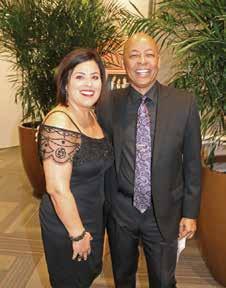
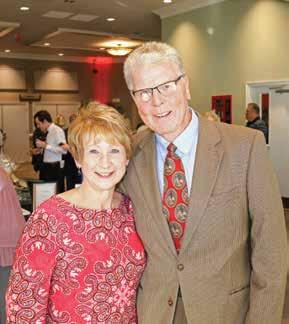
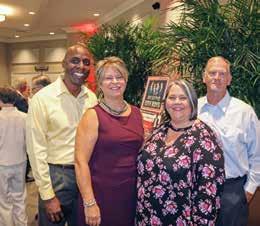
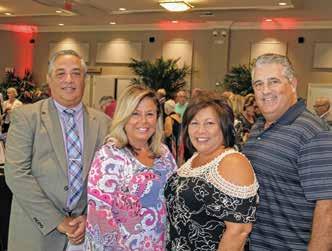
NOV ‘18 › healthyliving magazines.com 13
Mary Ellen and Norm Poe
Elena Martinez-Lopez, Juan Lopez
Fred Malmsheiner, Jean Lunt, Norm Poe
Clark Barrios, Richard Gebs, Dustin Fisher, Rusty Smith
Steve and Georgeann Blank, Denise and Micheal Riddleberger
Chief Greg Graham, Patty Lumpkin, Steve Blank
Tommy and Gina Lewis, Carolyn Wildon
Adela and Simon Amir
Don, Jane and Donald Baracskay
Jeffrey and Susan Moore, Brandy Forman-Kraft, Reuben Kraft
SERVICES INCLUDE:


CLINICAL DERMATOLOGY:
Acne
Eczema
Psoriasis
Skin Cancer

Vitiligo
Sun Spots
Liver Spots
Rosacea
COSMETIC DERMATOLOGY:
Botox
Fillers
(Juvederm/Restylane)



Laser hair removal
Photofacials for rosacea & sundamaged skin
Laser treatments for acne scarring
Individualized skin care regimens
VelaShape cellulite reduction treatment
14 healthyliving magazines.com NOV ’18 MidState Skin Institute at Deerwood 1630 SE 18th Street, #400, Ocala, FL 34471 (352) 512-0092 MidState Skin Institute at Jasmine Park 7550 SW 61st Ave., Suite 1, Ocala, FL 34476 (352) 732-7337 MidState Skin Institute is pleased to announce our newest office location in Jasmine Park! MidStateSkin.com
Melissa Singleton, PA-C
Dr. Christina Mitchell Dr. Ashley Cauthen
Anna Wilemon, Licensed Esthetician O ering facials, waxing, microdermabrasion, chemical peels, IPL and Sublative Laser Treatments
Katie Keel, ARNP-C Stacey Klingbeil, PA-C
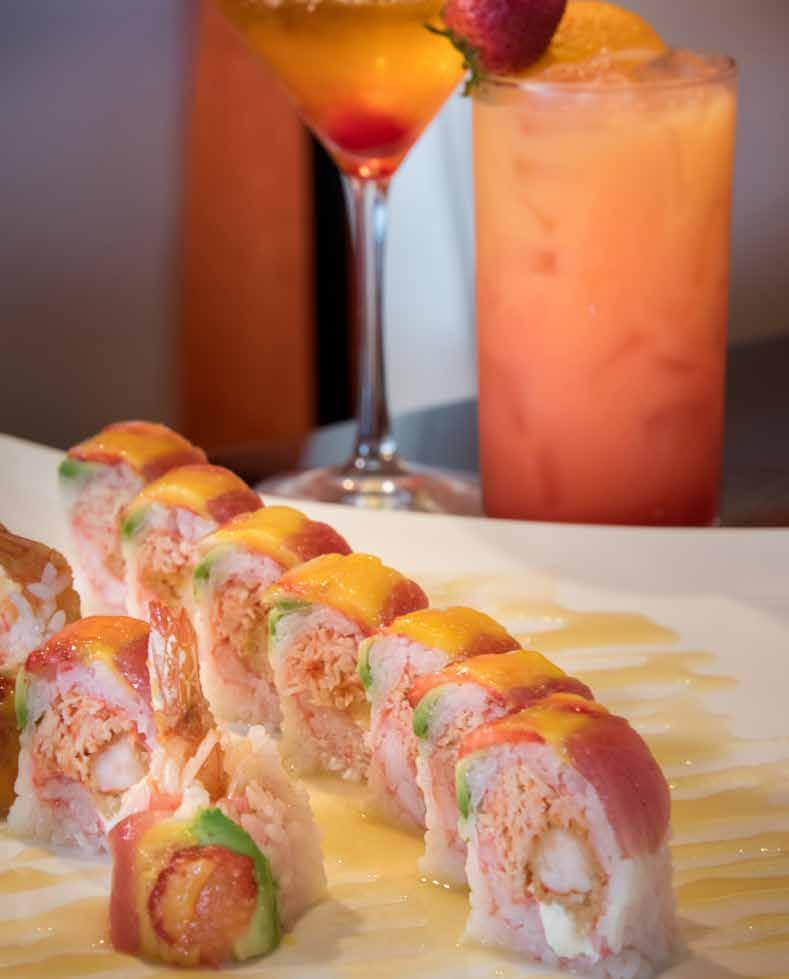
NUTRITION FITNESS BEAUTY HEALTHY PAGE 15 good eats:
Looking for a light lunch? With all the menu options available and over 100 omenu rolls, Tony’s Sushi has something for every palate. 3405 SW College Road, Ocala › (352) 237-3151 › tonysushi.com
Photo by John Jernigan
fall in a bowl
Nowadays, pumpkin spice flavoring is in everything, from your morning latte to tortilla chips. Many times, this is a commercially processed, additive-laden concoction that bears little resemblance to real pumpkin flavor. If you want an authentic wallop of pumpkin yumminess, try this “fall in a bowl” soup.
“Fall In A Bowl” Pumpkin Soup

4 tablespoons olive oil, divided
1 4-pound fresh pumpkin
1 large yellow onion, chopped
4 large or 6 medium garlic
cloves, pressed or minced
1⁄2 tsp sea salt
1⁄2 tsp ground cinnamon
1⁄2 tsp ground nutmeg
1⁄8 teaspoon cloves
Freshly ground black pepper
4 cups (32 ounces) vegetable broth
1⁄2 cup full-fat coconut milk
2 tbsp maple syrup
1⁄4 cup toasted pumpkin seeds (pepitas)
Robin Fannon is a New York culinary school-trained chef and a successful party planner with decades of experience. You can visit her popular blog at rsvprobin.com for healthy recipes, party tips and lifestyle articles. Or check her out on Facebook or Instagram.

rsvprobin.com
Preheat oven to 425°F, and line a baking sheet with parchment paper for easy cleanup. › Carefully halve the pumpkin, and scoop out the seeds. (You can roast the seeds if you’d like, but you won’t need them for this recipe.) › Slice each pumpkin halve in half to make quarters. › Brush or rub 1 tablespoon olive oil over the flesh of the pumpkin, and place the quarters, cut sides down, onto the baking sheet. › Roast for 35 minutes or longer, until the orange flesh is easily pierced through with a fork. › Set aside to cool for a few minutes. › Heat the remaining 3 tablespoons olive oil in a large Dutch oven or heavy-bottomed pot over medium heat. › Once the oil is shimmering, add onion, garlic and salt to the skillet. › Stir to combine. › Cook, stirring occasionally, until onion is translucent, about 8 to 10 minutes. › In the meantime, peel the pumpkin skin o the pumpkins, and discard the skin. › Add the pumpkin flesh, cinnamon, nutmeg, cloves, cayenne pepper (if using) and a few twists of freshly ground black pepper. › Use your stirring spoon to break up the pumpkin a bit. › Pour in the broth. › Bring the mixture to a boil; then reduce heat, and simmer for about 15 minutes to give the flavors time to meld. › While the soup is cooking, toast the pepitas in a medium skillet over medium-low heat, stirring frequently, until fragrant, golden and making little popping noises. You want them to be nice and toasty but not burnt. › Transfer pepitas to a bowl to cool. › Once the pumpkin mixture is done cooking, stir in the coconut milk and maple syrup. › Remove the soup from heat, and let it cool slightly. › You can use an immersion blender to blend this soup in the pot. I prefer to use my stand blender, which yields the creamiest results. › Working in batches, transfer the contents of the pan to a blender. Do not fill your blender past the maximum fill line. › Securely fasten the blender’s lid, and use a kitchen towel to protect your hand from steam escaping from the top of the blender as you purée the mixture until smooth. › Transfer the puréed soup to a serving bowl, and repeat with the remaining batches. › Taste, and adjust if necessary. (I thought the soup was just right as is, but you might want to add more coconut milk for extra creaminess/milder flavor or maple syrup to make it a little sweeter). › Ladle the soup into individual bowls. › Sprinkle pepitas over the soup, and serve. › Let leftover soup cool completely before transferring it to a proper storage container and refrigerating it for up to 4 days. Or, freeze this soup for up to 3 months.
16 healthyliving magazines.com NOV ’18
body HEALTHY RSVP ROBIN
› Recipe by Robin Fannon
› Photo by John Jernigan
smart fitness
In the past decade, a wide range of fitness technology has been unveiled, and the popularity of wearable fitness devices continues to grow. With gizmos galore, it’s easy to get lost in the high-tech world of health, but these devices will have you in touch with your body and celebrating the little victories on the road to success.
Fitbit

The Fitbit combines calling and texting features with activity and health notifications. Real-time updates combine with exercise summaries, as well as a sleep-tracking feature, which allows you to check the stats on your sleep stages and work on getting a better night’s rest.
$60, fitbit.com
UA HOVR Running Shoes

Under Armour’s cushiony but flexible shoes o er breathability and a comfortable fit. This allows for support and impact absorption while facilitating “energy return,” a function that helps to give back the energy you put in thanks to the shoe’s high-tech foam. Along with functioning as a standard shoe, its sensors digitally connect to your device to act as a pedometer and database.
$110, underarmour.com
Moov Now Motion Based Coach
Jaybird X3 Sport Wireless InEar Headphones
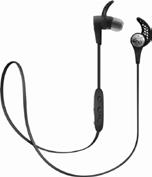
Sweat resistant and built for movement, these headphones won’t let athletes down. The microphone allows users to talk during hands-free calls, and the device retains a full eight hours of use when charged. A cord management and fabric clip, which secures to clothing, ensures cords are kept tidy and out of the way, and the headphones repel moisture while maintaining a snug but comfortable fit.
$120, jaybirdsport.com
The durable and waterproof Moov bracelet provides lap insights and personalized feedback geared toward improving your workout. Advanced technology recognizes and conforms to your personal swimming style. This gadget doesn’t skimp on data, o ering advanced analytics such as stroke rate and distance per stroke.

$60, store.moov.cc
Yunmai Lite Bluetooth Smart Scale

A sleek and sophisticated design showcases this intuitive health and fitness tool. Users will appreciate the high-tech upgrade to the standard scale, which measures bone mass, BMI, protein, water and body age, to name a few. Connect to an app to view your insights.
$40, iyunmai.us
NOV ‘18 › healthyliving magazines.com 17 body HEALTHY
Recognizing your strengths and weaknesses is key when it comes to physical improvement, and tracking your fitness progress makes for peak performance.
› By Lisset Lanza
open enrollment is here!
From Thursday, November 1 to Saturday, December 15, you can apply for one of the many health plans o ered using any one of four methods. If needed, you can apply for a Special Enrollment Period, but you must meet at least one of the varied criteria for such an extension. These criteria can be found on the Marketplace website at healthcare.gov.
ONLINE ENROLLMENT
Simply go to healthcare.gov and create an account. Carefully follow all instructions. You will first be asked questions to determine whether you qualify for Marketplace coverage. If you are eligible, you will be asked to answer several questions concerning you and any tax filers and tax dependents living in your home.

Things to have on hand:
› Social Security numbers of all persons in your household
› Any pertinent immigration
documents for lawfully present immigrants
› Employer and income information for yourself and anyone living in your household (W-2s, paystubs, etc.)
› It helps to have last year’s tax return on hand to assist in gathering income information
› A predetermined estimated household income for 2019
› Enrollment information for anyone covered by other health insurance sources such as Medicaid, Medicare, Children’s Health Insurance
Program (CHIP), Veterans Administration or a private health insurance plan
› Information about any health coverage available through a household member’s employer
Supporting documents may be required. They must be provided in one of two ways:
Mail to:
Health Insurance Marketplace
Attn: Supporting Documentation 465 Industrial Blvd. London, KY 40750-0001
Only mail photocopies. Do not send original documents.
Scan: Scan and upload supporting documents during the application process. There are screen-by-screen uploading instructions provided with explanatory pictures provided on the website. Documents cannot be emailed; if supplied electronically, they must be scanned and uploaded.
PHONE ENROLLMENT
You can call and have a qualified Marketplace representative assist you in filling out your application. Call (800) 318-2596 (TTY: (855) 8894325) 24 hours a day/seven days a week (except holidays). Please have all the necessary documents that are listed for online enrollment on hand to help expedite the application process.
18 healthyliving magazines.com NOV ’18 body HEALTHY
It’s time to apply for a ordable health insurance through the Health Insurance Marketplace—and enrollment has never been easier.
›
By Jim Gibson
APPLY IN PERSON
There are two ways to get faceto-face assistance in filling out your application for coverage:
You can use a Marketplaceregistered agent or broker to assist you in enrolling. Their services are generally free, as the assistance is usually paid for by insurance companies. These assistants are licensed by the

state and are generally required to act in your best interest. Be aware, however, that some may only sell certain companies’ plans. If needed, they can refer you for Medicaid or CHIP assistance, but check to make sure that their service is free.

Assisters are trained and certified individuals who are required to provide impartial and accurate information. They can also help you apply and enroll in a health plan with savings or apply for Medicaid or CHIP.
A complete list of local agents, brokers or assisters can be found by following instructions on the healthcare.gov website.
Use USPS
You can download a paper application from the
Fill it out,
mail it in. You will receive your eligibility results within two weeks. You can then create an online account or contact the Marketplace Call Center to enroll.

NOV ‘18 › healthyliving magazines.com 19
healthcare.gov website.
Mail your signed application to: Health Insurance Marketplace Dept. of Health and Human Services 465 Industrial Blvd. London, KY 40750-0001 Contact the Marketplace Call Center at: (800) 318-2596, TTY: (855) 889-4325 do this! Report the following changes immediately: › Changes to your expected income for the year › Changes in health coverage › Birth or adoption, placing a child for adoption or foster care, becoming pregnant, or if you marry or divorce › If a child on your plan turns 26 years of age › Death of an applicant or household member › If you have a change in disability status, tax filing status, citizenship or immigration status or if you are incarcerated or released from incarceration What The Health Insurance Marketplace Can Provide For You › A ordable private health insurance plans that o er comprehensive coverage to help you stay well › A new tax credit that can immediately help pay your premiums for health coverage › Free or low-cost coverage from Medicaid or CHIP › You may qualify for a free or low-cost program, even if you earn as much as $98,400 a year (for a family of 4) Source: marketplace.cms.gov/applications-and-forms/marketplace-applicationfor-family.pdf Source: healthcare.gov
and
vaping: everything we know, and everything we don’t
According to the Florida Youth Tobacco Survey’s 2018 results, 86.3 percent of youth ages 11 to 17 are committed to never smoking cigarettes. This sounds promising, but 26.3 percent of them had still tried electronic vaping and 15.7 were current users. The National Institute on Drug Abuse found that seven in 10 students in the same age group are exposed to ads from e-cigarette manufacturers. Why are teens using them, and at what cost? ›
By Katie McPherson
Dr. Tracey Barnett is an associate professor at the University of North Texas and associate dean for academic a airs at UNT’s School of Public Health. She is a preeminent researcher studying smoking and tobacco use among young adults.
“The cigarette trend for youth is plummeting, and it was plummeting before e-cigarettes took o , but now these are trending up,” says Barnett.
Much To Learn
When electronic cigarettes were introduced into the market, many companies marketed them as cleaner cigarettes without tar and carcinogens. Others said they could be used to quit smoking by buying liquid to refill e-cigs with lower concentrations of nicotine over time. Most physicians say this isn’t an e ective approach.

“Typically, adults who try this end up as dual users, not quitting. We have approved medicines for those who want to quit. If you wear a patch to quit smoking, you won’t be doing the habitual acts of smoking, like hand-to-mouth smoking behavior and always doing it after dinner, for example.”
Barnett explains that e-cigarette smoking sessions also last longer than traditional cigarette smokers’ do, as they don’t burn out. But because they’re so new, scientists
don’t have even 20 years’ worth of data to determine the long-term health risks.
“There is some research showing that a lot of the flavors are approved for ingesting but not for inhalation, which would be like inhaling the butter flavor on microwaveable popcorn,” she says. “It’s a whole new ballgame to know if that’s safe to breathe in. Secondly, nicotine is still addictive and does restrict blood vessels. We may see lower rates of cancer than we did with traditional cigarettes, but we may still see cardiovascular issues.”
The Duel With JUUL
News headlines everywhere have covered the Food and Drug Administration’s warning issued to JUUL, one e-cigarette company whose product looks like a large flash drive and charges via USB port. It’s the model most commonly used by teens.
“One reason JUUL has taken o is that e-cigs produce a massive amount of vapor, but JUUL hardly produces any, so you can get away with using it in the movies or at school. And you’ve got kids charging it in their laptops in class,” says Barnett.
The FDA warned JUUL and other companies it may soon outlaw flavored
20 healthyliving magazines.com NOV ’18 body HEALTHY
products that appeal to young consumers, like vanilla crème and mango.
“Cigarettes trended down because flavorings were removed by the FDA, so they were not appealing to kids anymore. But now we allow hookah and e-cigarettes to have flavors,” explains Barnett. “I’m trying to be hopeful now that the FDA has issued their warning, but the longer we wait, the farther we get down the road. We need to reduce the number of flavors, we need legislation and parents need to talk to their kids.”
Talking With Your Teens
Many parents don’t realize how prevalent vaping is among students, which isn’t accidental, according to Barnett. E-cigarette companies spend their advertising dollars targeting information to younger consumers rather than older ones.


“They are investing in a new generation of nicotine addicts. It’s peers, and it’s social media. Adults don’t see it because it’s marketed on sites and Instagram pages youth follow, not adults,” Barnett says. “Kids are also a ected by norms. They don’t see tobacco stores, but they do see vape shops. We as a society kind of send the message these are OK.”
In order for parents to have productive conversations with their middle and high school students, Barnett says following the accounts your child follows on social media is a great start. Next, get them thinking aloud with you.
“Take an interest in what they’re following on social media so you know what they’re seeing. They’re hearing from friends and social media [that] these things are OK, so they need to be hearing from their parents that it’s not,” she says. “Ask questions to make them start thinking
about it: ‘What do you know about JUUL? What do you know about vaping? Why is it advertised on your sites and not mine? Why do they want you instead of me? Because they can turn you into a lifetime addict.’”
She also says it’s important to share information with your children that past public health campaigns have used to make smoking seem completely unappealing.
These messages are why 86.3 percent of youth refuse to smoke traditional cigarettes, and they could work again.
“Tell kids it’s a tobacco company making these products, that it’s not something di erent from regular cigarettes but a new version of a bad thing. They may be safer than cigarettes, but that doesn’t mean they’re safe.”
NOV ‘18 › healthyliving magazines.com 21
.Sources: fl oridahealth.gov, drugabuse.gov
E-cigarette companies spend their advertising dollars targeting information to younger consumers rather than older ones.
Focusing On Your Eyes
World renown retina specialist Dr. Shalesh Kaushal has recently joined forces with Dr. Linder Earl Wingo at Associated Comprehensive Eye Care. From preventative care to comprehensive exams and surgeries, Dr. Kaushal and Dr. Wingo work to keep your eyes healthy and strong by providing patients with the most comprehensive eye care possible in a friendly, professional environment.
The eye, although often overlooked, is an essential yet highly sensitive and complex structure that allows us to see the world around us. At Associated Comprehensive Eye Care, Drs. Shalesh Kaushal and Linder Earl Wingo combine decades of medical practice with the most cutting-edge technology available to provide patients with the best care possible. Their goal is to help patients maintain strong, healthy eyes throughout their lives and reduce the risk of degenerative ophthalmic conditions.
Dr. Kaushal, educated at Yale University, Johns Hopkins and the Massachusetts Institute of Technology, is a world renowned clinician, scientist and educator. This has given him an unusual, nuanced clinical experience in treating and managing chronic diseases like age-related macular degeneration (AMD), diabetic retinopathy, other retinal conditions and glaucoma. In addition, his research has led to an understanding of and has impacted research in inflammation, oxidative stress, poor energy production by the mitochondria (the energy factories of the cell), glucose metabolism and immune system imbalance that occurs in chronic diseases.
Dr. Linder Earl Wingo, M.D., medical director of Associated Comprehensive Eye Care, is an established and highly skilled physician with over 40 years of experience in diseases of the eye and ophthalmic surgery. He specializes in the evaluation and treatment of eye diseases, including but not limited to cataracts, glaucoma, macular degeneration dry eye and associated eyelid
diseases. He holds degrees from Emory University, the University of Florida, the Medical College of Georgia and the University of Alabama Medical Centers. He is a member of the American Academy of Ophthalmology, the American Society of Cataract and Refractive Surgery, the American Medical Association and the Marion County Medical Society. He has served in the U.S. Navy. Dr. Wingo has a special interest in neuro-ophthalmology and external diseases of the eye and eyelids.
For Dr. Kaushal, it is an honor and privilege to take care of patients. This commitment is a confluence of his spiritual values and his background as a retinal clinician and scientist. He is passionate about providing care through a thoughtful partnership with his patients by chaperoning them to better overall health and simultaneously protecting and improving their vision.
“I immensely enjoy taking care of patients and find it deeply gratifying as their vision and health improves,” says Dr. Kaushal. “I am wholly committed to the compassionate, cutting-edge care for all my patients.”

22 healthyliving magazines.com NOV ’18
PROMOTIONAL FEATURE
Dr. Shalesh Kaushal
Dr. Kaushal has extensive expertise in the areas of macular degeneration, diabetic retinopathy, inherited retinal diseases, inflammatory diseases of the eye, multiple sclerosis and Lyme disease of the eye, surgery of the retina and vitreous, cutting-edge diagnostic testing, novel clinical trials, nutritional biochemistry and clinical genomics.



“The retina is an amazing structure with the largest blood supply per unit volume in the body and is so metabolically active that nearly all human diseases have a retinal manifestation,” says Dr. Kaushal. “Indeed, it’s a sensitive barometer of our well-being. The principle of improving our overall health and nutrition to optimize retinal function is a simple and novel idea.”

As a clinician and scientist, Dr. Kaushal’s basic research e ort has been to understand the molecular and biochemical basis of retinal and macular diseases. Separately, his research has led to the identification of certain nutraceuticals that mitigate common disorders of the retina like macular degeneration and diabetic retinopathy. He is also actively developing stem cell treatments for retinal diseases. His work has led to several clinical trials.
Dr. Kaushal has a currently funded research project studying the incidence of diabetic retinopathy in the general population using a new telemedicine approach. He serves on the scientific board for the Lion’s Eye Bank at Bascom Palmer Eye Institute and many biotech companies. He is also a consultant for multiple biotechnology and diagnostic device companies. He has been invited as a speaker throughout the United States and internationally.
Even with his clinical practice and research interests, Dr. Kaushal’s highest priority is his family. He, his mother, wife, son and daughter live in Gainesville with their two Coton de Tulears puppies. Dr. Kaushal and his family have been continuously active in various charitable programs in Gainesville. He has made many trips to India where he has taken care of retinal patients and done many surgeries free of charge, as his way of giving back to society.
“I enjoy studying both science and spirituality,” says Dr. Kaushal, “but perhaps even more importantly, practicing them to improve the lives of my patients and in doing so to improve the quality of my own life. It is an honor and blessing to take care of patients. Indeed, our sta and I consider them our friends.”
NOV ‘18 › healthyliving magazines.com 23
ASSOCIATED COMPREHENSIVE EYE CARE 2441 E FORT KING STREET, #100, OCALA (352) 732-8404
The principle of improving our overall health and nutrition to optimize retinal function is a simple and novel idea.” —DR. KAUSHAL
Dr. Linder Earl Wingo and Dr. Shalesh Kaushal
Photography by John Jernigan
24 healthyliving magazines.com NOV ’18
For every lifesaving drug and every revolutionary medical treatment, there was a time when there were more questions than answers.
Animals are often used in the early testing stages of a new drug or surgical technique. Rodents and fish comprise a huge percentage (over 95 percent) of the animals used in research, but other species
For The Sake Of Science
BY CYNTHIA MCFARLAND
are used, as well. The cardiovascular system in pigs, for example, is similar to that in humans.
But testing with animals has its limits, so before a new drug or medical device is available to the public, it must go through even more intensive testing. This is when clinical trials—and human volunteers—play a vital role.
Scottish surgeon James Lind is generally credited with conducting the first controlled trial. This happened all the way back in 1747—while at sea, no less. Lind, who was a surgeon in the British Royal Navy, undertook his trial of 12 sailors su ering from scurvy on the vessel Salisbury. Lind divided the men into six groups of two, giving each group di erent daily treatments but keeping other factors (diet and environment) as similar as possible.
Among the treatments were vinegar, cider, citrus fruit, sea water, dilute sulfuric acid and a paste made from garlic, mustard seed, dried radish root and gum myrrh. (In case you’re wondering, the sailors who received the oranges and lemons fared the best, proving that citrus fruit can be successful in treating scurvy. By the end of the 18th century, the Royal Navy routinely provided its sailors with lemon juice.)
“Clinical trials are absolutely essential to the introduction of newer and better therapies for cancer patients,” says Hatem Soliman, M.D., who works in the Breast Oncology Clinic at Mo tt Cancer Center in Tampa and is the Clinical Trials O ce Medical Director.
“Approved drugs like Herceptin have revolutionized the treatment of women with HER2+ breast cancer and would never have made it to the clinic without the evidence provided by brave patients participating in well-designed clinical trials,” notes Soliman. (Herceptin gained United States Food and Drug Administration (FDA) approval in September 1998.)
TYPES & PHASES
Clinical trials can vary significantly depending on the type of trial, which include:
› Treatment: Testing new drugs, treatments or methods
› Screening: Testing new ways to detect a disease or condition
› Diagnostic: Comparing or studying testing/ procedures to diagnose a certain disease or condition
› Prevention: Looking at ways to prevent disease
› Behavioral: Comparing/evaluating ways of promoting behavioral changes to improve health
› Quality of life/supportive care: Evaluating ways of improving quality of life and comfort in people with a certain illness/condition
A trial may be sponsored by a company, government agency or other organization that funds and manages the study but doesn’t conduct the actual research.
Researchers use di erent phases of clinical trials for di erent purposes. There are typically four phases of trials, as defined by the FDA. Each phase is designed to help researchers gain more information about the drug or treatment being studied, including risks and e ectiveness.
The first phase involves the smallest number of participants, with increasing numbers used in subsequent phases. If you are considering participating in a clinical trial, you’ll want to ask which phase you will be in.
NOV ‘18 › healthyliving magazines.com 25
How everyday people help change the course of scientific discovery
› Phase I: A small number (generally 20 to 80) of people are used to study the safety and dosing of a drug.
› Phase II: The same drug or treatment is given to a larger number (100 to 300) of people with a focus on e cacy (how active the drug or treatment is).
› Phase III: An even larger number (1,000 to 3,000) of people receive the same drug or treatment to further study e ectiveness and to determine whether the new treatment is better than the standard of care.
› Phase IV: The drug or treatment has already been approved by the FDA and made available to the public, but this continued research is used to track safety and gain more information about benefits and use.
Some studies are randomized, meaning participants are randomly assigned to either the treatment group or the control group. Neither you (nor your doctor) can choose which group you’ll be in.
In a blind study, the participants don’t know which treatment they’re receiving. In the case of a double-blind study, neither the participants nor their doctors know. Blinding can be helpful in that it lowers the chance of bias during evaluation of participant outcomes, which helps make study results more reliable.
In the United States, a clinical trial “must have an institutional review board (IRB) if it is studying a drug, biological product or medical device that the Food and Drug Administration (FDA) regulates or it is funded or carried out by the federal government.”
An IRB is comprised of an independent group of doctors, statisticians and community members who review, monitor and approve the study. It’s the task of the IRB to make sure the study is ethical, that volunteers’ rights and welfare are protected and that risks are reasonable as compared to possible benefits.
RISK FACTORS
All you have to do is read the fine print on a drug label to realize some amount of risk is inherent with any medication—even for the drugs that have already been FDAapproved for use.
Is there risk involved in a clinical trial?
The short answer is “yes.” The mere fact that this is a trial means there are more unknowns than with an established medication or treatment. If researchers were absolutely sure of what to expect, there would be no need for a study.
Understandably, the earliest phases of a trial may carry greater risk, simply because the drug or treatment is so new.
That said, your physician should be able to help you decide whether the possible benefits outweigh potential risks. For example, some cancer patients are willing to participate in a clinical trial because of the chance of help or improvement.
Questions to consider before deciding to participate in a clinical trial include:
› What is the required time commitment?
› Is travel involved?
› Will I be reimbursed for time and travel?
› Will I have to pay any costs?
› What are possible short-term benefits and risks?
› What are possible long-term benefits and risks?

› What are the side e ects?
› Can I expect any discomfort as part of the process?
› Am I entitled to treatment if I am harmed as a result of the trial?
› Are other treatment/medication options available?
› If so, how do the potential risks and benefits of those options compare with those of the clinical trial?
Anyone who enrolls in a clinical trial is required to sign an informed consent form, which includes details about the study, including risks, as well as contact information. Once chosen, you are not required to remain in the study. You are a volunteer and as such are allowed to withdraw at any time.
WHY PARTICIPATE?
The groundbreaking advances made possible by clinical research depend on “regular” people—just like you and me—to volunteer for clinical trials.
There are a variety of reasons someone is willing to participate. If you have an illness or condition (this makes you a “patient volunteer”), being part of a clinical trial can o er an opportunity to receive the latest treatment, medication or procedure. If you’re in good health, volunteering for a trial can be your way of making a contribution to science in hopes of helping others in the future, or maybe you’re doing it because someone you love is su ering from a specific disease or condition.
Patient volunteers may or may not actually benefit personally from the trial. In the case of a drug study, some may receive a placebo or a test dose of the drug that is not at a level which can actually treat the illness or condition. (In a cancer trial, placebos are not usually used unless given along with an active drug.)
26 healthyliving magazines.com NOV ’18
Healthy volunteers are vital in that they help develop a baseline for comparison with patient volunteers. Both healthy and patient volunteers receive the same drug, test or procedure, allowing researchers to learn while comparing the two groups.
Patient volunteers should ask if they’re able to continue getting the drug or treatment once the study ends if it’s been helpful.
And just because you volunteer for a study doesn’t mean you will be accepted to participate. There are guidelines for every clinical trial that take into consideration a wide range of inclusion and exclusion criteria. Age, gender, health, past treatment history and existing medical conditions are all factors that may allow or prevent participation.
If rejected for a trial, you shouldn’t take it personally. Researchers must use inclusion and exclusion criteria to identify appropriate volunteers who can safely participate in the study.
WHAT TO EXPECT
If you meet the criteria to be accepted into a trial and have signed the informed consent form, you may be asked to visit the clinic or hospital where the study will take place. During this time, a sta member will discuss study details and answer any questions you may have.
The amount of time involved and what is required of you can vary widely and will depend on the particular study. You may have frequent physical exams and blood draws for testing, which require regular appointments that typically fall into a narrow window of time, generally three to seven days. These appointments may be days, weeks or months apart. There may be follow-up appointments or contact with the research team after the study ends.
In this day of identity theft, it’s understandable that someone volunteering for a clinical trial wants to know their information will remain confidential. To protect your personal and medical information, your name is not included on test result forms and information that is
entered into computer databases for the study. You are identified by a number or code, so researchers analyzing the results don’t see your name and your personal information will never appear in any published study results.

HOW TO FIND A TRIAL
Cancer, Alzheimer’s disease, neurological disorders, infectious diseases and allergies are among the illnesses and conditions frequently studied in clinical trials. If you are already being treated for one of these illnesses or conditions, your doctor may suggest participating in a specific clinical trial.
“Speak with your doctor if you’re wondering whether or not a clinical trial is right for you,” says Soliman.
You can also find out about clinical trials on your own and contact them directly to see if you meet the criteria for inclusion. Then, you can discuss the details with your health care provider before deciding to join a study.
ClinicalTrials.gov is an excellent resource, as it features a database of federally and privately supported clinical trials in the United States and worldwide. When you visit the website, you can narrow your options by entering a type of condition or illness and location. You can then view the various trials that pertain to your search. The site provides information about the trial’s purpose, who may participate and phone numbers to call for further information.
For cancer trials, visit Mo tt Cancer Center website and click on the “research” tab.
The National Institutes of Health (NIH) conducts clinical research trials for many diseases and conditions at its clinical center in Bethesda, Maryland.
You can also join a national registry of research volunteers. The NIH has funded a free registry, Research Match, to help connect researchers and volunteers looking to participate in clinical research studies. Who knows? You could be part of the process that saves a life—your own, a loved one or someone you may never meet.
NOV ‘18 › healthyliving magazines.com 27
A CLINICAL TRIAL moffitt.org clinicaltrials.gov
researchmatch.org
FIND
nih.gov
The YouStory
MaybeThinkofallthemomentsthatmakeupyourlife. yourshasbeenonefilledwithadventureor youisaninspiringtaleofovercomingadversity.Perhaps family.simplywishtopreserveyourhistoryforyour daunting.Buttheideaofwritingitalldowncanbe Thegoodnewsisyoudon’thavetoprofessionalsdoitalone.Therearesometalentedlocal availabletohelp.
 ByNickSteele
ByNickSteele
of
First, let’s talk terminology. Many people use the words memoir and autobiography interchangeably. But in the publishing world, a memoir typically focuses on a particular time or aspect of a person’s life, while autobiographies are a record of that person’s life from birth to present day. However, this distinction is only relevant if you are hoping to sell your story commercially. What is most important is to identify your goals and the correct resource for you. If you have already written (or plan to write) your own story for publication, you’ll need an editor with publishing experience to help you focus and refine your e orts. If you don’t want to write it yourself, you need a ghostwriter. If you’re solely interested in preserving the story of your life for your loved ones, you want a memoirist or raconteur.
The Memory Palace
“With a personal memoir, the individual is able to tell their story in a very authentic and natural way,” o ers Olivia Spallino Savoie, a raconteur based in The Villages.

“I arrive with a set of questions. They serve as a guide, beginning with prompts regarding childhood and adolescence and progressing to the present.”
Once Savoie has completed her interview sessions, she uses that material to compose the story. Her goal is to preserve the subject’s voice and memories without any embellishment. It generally takes her a month or two to complete the manuscript, which can range in length from 5,000 to 50,000 words. She is also able to incorporate 50 to 100 photos in the final book.
“We construct tribute books to celebrate lives and cement legacies by interviewing family and friends and compiling photographs, letters and other documents,” she explains. “By preserving all of that, you have something that will inform and inspire present and future generations.”
To learn more about Olivia’s services, visit raconteurwriting.com.
A Heartbreaking Work of Staggering Genius
If your goal is to sell your story, you likely need an experienced editor to assess your manuscript and help you get it into the best shape possible before you submit it to literary agents or go the route of self-publishing.

Belea T. Keeney is an Ocala-based editor who works with writers in various

NOV ‘18 › healthyliving magazines.com 29
Olivia Spallino Savoie
Belea T. Keeney
ways, from editorial evaluation to developmental editing. She has edited such notable books as For the Record by musician Don Tolle and the award-winning memoir Coulda, Woulda, Shoulda by Kenna P. Marriott.
Keeney begins her process by giving her clients a sample edit to provide them with a sense of how much time and e ort a project will take.
“Memoirs for publication are quite di erent than ones solely for people who already know the writer,” Keeney o ers. “They involve much more scene-setting, backstories and detail to show the reader the action and drama. Most of my clients come to me with at least some material already written. I’ll do an evaluation of the manuscript, o er suggestions, comments and queries to help the writer shape the rest. Some just have an outline, and I help them decide what to include, what to add and how to write their story e ectively.”
Visit beleatkeeney.com for more information.
The Sky is Not the Limit
Let’s say you believe your story has the potential to be published, but you need someone else to write the manuscript.
That’s where ghostwriters like Patricia Charpentier come in.
This celebrated author of the award-winning book Eating an Elephant: Write Your Life One Bite at a Time has helped hundreds of people write and publish their stories over the past 20 years. She has also worked with a number of individuals with Alzheimer’s.
“I work with a lot of people with memory loss. I get as much as I possibly can,” she o ers. “They’re usually very clear about what happened a long time ago. It’s what happened 10 minutes ago that they have trouble with.”
In addition to ghostwriting, Charpentier o ers editing services, coaching and classes.

To learn more about her book and services, visit writingyourlife.org.
The Glass Castle
A few years back, writer Amy Mangan penned a column for the Ocala Star Banner called Writing a Story Worth Telling. She explained that most people defeat themselves before they even start, by o ering up a litany of excuses.

“Not enough time. No talent. Few skills. Bad lighting. Bad computer. Bad third day of the sixth month of the year,” she mused. “Excuses, really. I recognize them all. I’ve made these arguments, too. Lack of
co ee also has been one of my reasons. But empathy and ca eine-deficiency aside, my response to them (and me) is this: Stop whining and start writing.”
At the time, Mangan was at work on a memoir. Her journey past her own self-defeating excuses was fueled by the inspiration she drew from her father Sherman Yeary, who at the age of 67 wrote his first book, The Story Pole, a memoir about growing up in a small town.
“He didn’t have an agent or a book contract,” she explained. “He self-published four non-fiction works, all centered on his life, family, friends and his beloved community of Ocala, Florida.”
30 healthyliving magazines.com NOV ’18
“I made it a priority. I got up at five every morning and wrote for two hours. I didn’t stop until I had completed at least a thousand words. I also did not self-edit.”
- Amy Mangan
Amy Mangan
Patricia Charpentier
Mangan recently published her memoir entitled This Side Up: The Road to a Renovated Life. After devoting a decade of her career to writing about picture-perfect homes and gardens for such magazines as Better Homes & Gardens and Southern Living, this first-time author bravely pulled back the curtain on her own less-than-perfect life. In it she reveals how financial, health and marital struggles threatened her very existence and how she found the strength to face down adversity and redefine what
I Know Why the Caged Bird Sings
Although all memoirs are personal, some require the writer to revisit their darkest days and reveal details that others might prefer stay hidden. Often these books o er readers a lifeline and a road map to help them navigate their way out of similar situations.
it means to be happy amid overwhelming circumstances.
“A crisis can make you feel isolated, let alone experiencing several at once,” shares Mangan. “I want people to know they’re not alone, they will survive, that there is no shame in your life falling apart.”
How did she stay focused until she had the very best manuscript she could create?
“I made it a priority. I got up at five every morning and wrote for two hours. I didn’t stop until I had completed at least a thousand words,” she recalls. “I also did not self-edit. That first draft... you just have to write it. On weekends I would proof and edit drafts.”
Mangan advises that writers also need to fully understand their reasons behind telling their story. She cautions that if the goal is based mainly on being published, it’s time to reexamine your motivations.
“I was fortunate to get the book published, but my goal was first to write this story as a tribute to my family and also the friends and loved ones that carried us through some very di cult times,” she reveals. “Secondly, I wanted to give hope and courage to others. That’s the best reason to write a memoir. There is real power in sharing your truth.”
To learn more about Amy Mangan and her memoir, visit amymangan.com

Mickie Zada recently released Looking Behind Closed Doors: Domestic Abuse: If We Don’t Change, Nothing Changes. Part memoir and part personal growth guide for those who have been victims of abuse, Zada draws from her 34 years as a victim of domestic abuse and o ers insightful perspectives and strategies.
“Like most memoir writers, I worried that I’d be judged,” Zada reveals. “I was concerned that telling my story of domestic abuse would shed a negative light on who I am. One day, I decided that other people’s opinions of me were none of my business.”
Zada confesses that even after that epiphany, she still needed a nudge to move forward.
“It was still di cult for me to come to terms with writing about my domestic abuse,” she recalls. “When I was on the cusp of making the decision to speak and write my truth, I sought advice from a former counselor. He congratulated me on my intention to write a book and told me that as long as I don’t tell my story, I’m still being controlled and abused... still protecting my abuser. Wow! That was an eye-opener. That being said, one of my sisters is livid that I am truthful about domestic abuse. I do my best not to be inyour-face with my experience, but I chose to be honest, specific and direct. Hopefully, as more people talk about domestic abuse it will be brought out of the shadows. My sister will either get over it, or not.”
Even while dealing with such serious subject matter, Zada kept her book upbeat and accessible.
“I chose to use a sense of humor and write from my heart energy,” she explains. “By writing as if I’m sitting down at the table, talking with my readers, the words took on a less traumatic tone. Let go of the fear of other people’s response to your memoir. Start at the beginning, and let it flow!”
Visit survivingabusenetwork.com to learn more about Zada’s book and other projects.
NOV ‘18 › healthyliving magazines.com 31
“By writing as if I’m sitting down at the table, talking with my readers, the words took on a less traumatic tone.
Let go of the fear of other people’s response to your memoir. Start at the beginning, and let it flow!”- Mickie Zada
Mickie Zada

32 healthyliving magazines.com NOV ’18
St. John’s River
By Cynthia McFarland

NOV ‘18 › healthyliving magazines.com 33
Florida’s aquifers are both vital and vulnerable.
Photo courtesy of St. Johns River Water Management District
Living in Florida we’re probably more aware of water than residents in many other states. It’s a peninsula, after all, so we’re surrounded by the Atlantic Ocean and the Gulf of Mexico, not to mention all the rivers, lakes and springs we’re fortunate to have nearby.
Despite all that visible water, our primary source of water is groundwater, which comes from underground aquifers.
According to the Florida Department of Environmental Protection, most of Florida’s public water systems use groundwater, drawing from approximately 12,000 wells that connect with five major aquifer systems.
Notice the “s” on the end of that word. Yes, there’s more than one aquifer beneath our sandy soil. The largest of these is the Floridan aquifer system, which underlies not only all of Florida but parts of Georgia, Alabama and South Carolina, extending for about 100,000 square miles.
Four additional aquifers supply water in Florida: the sand and gravel aquifer (western Panhandle area), the Biscayne Aquifer (South Florida), the intermediate aquifer system (southwestern Florida), and the surficial aquifer system (any otherwise undefined aquifers that are present at the surface).
So long as the average person can turn on the tap and water comes out, it’s safe to say they probably don’t think much about where that water comes from. But as residents of a popular state with an ever-increasing population, we’d be wise to learn more about the remarkable, yet vulnerable, aquifer systems we depend on.
In A Nutshell
If you could take a giant vertical slice out of our part of the state and look at it from the side, you’d see a relatively thin layer of surface material (soil, sand, clay) at the top. Underlying that, you’d see a vast area of porous carbonate rocks.
Because that rock material (mostly limestone and dolomite) is permeable, it not only holds water but allows water to move through its holes, cracks and fractures. Filling those openings are both fresh and saltwater. Freshwater is found in the upper part of the aquifers, while

saltwater, which is heavier than fresh, is found at greater depths.
The Floridan aquifer averages 1,000 feet thick. In the central part of the state, the freshwater layer is thickest and can extend as deep as 2,000 feet below the surface. Toward the coast and the southern part of the state, that freshwater layer gets much thinner.
Growing Population
“The Floridan aquifer system is one of the most prolific water-bearing aquifers in the world. The nature of the limestone, caverns and fractures in the limestone
allow large volumes of water to move freely,” explains Scott Laidlaw, a professional geologist and bureau chief for water supply planning and assessment for the St. Johns River Water Management District.
One of five regional water management districts established by the state Legislature in 1972, the St. Johns River Water Management District covers 18 counties (12,283 square miles) in northeast and Central Florida, including Marion. As environmental regulatory agencies of the state of Florida, these management districts are tasked with “ensuring a long-term supply of drinking water, and to protect and restore the health

34 healthyliving magazines.com NOV ’18
Aquifer core sample photo courtesy of St. Johns River Water Management District
Aquifer Core Sample
of water bodies.” (The districts work with public water utilities but don’t supply water themselves.)
As might be expected, the increasing number of Florida residents is a very real concern for these agencies.
“One of the biggest challenges we face is a growing population and greater demands on our resources,” notes Laidlaw. “When we determine regions where groundwater alone can’t meet all the projected demands, we’re required to create water supply plans. All five of the districts in the state conduct regular water resource assessments to evaluate the potential e ects of supplying the demands for water with only groundwater.”
The 18 counties in the St. Johns district alone are anticipating a population of 6.7 million people by 2020 with an expected
water use of 1.3 billion gallons per day.
Our district alone is currently using just over 1 billion gallons per day. Keep in mind this doesn’t include such densely populated areas as South Florida or the southwestern portion of the state.
Utilizing Technology
“The district has always looked at innovative ways to get water back into the aquifer,” says Laidlaw, noting that an ongoing e ort is finding ways to reclaim water and reuse it, rather than pulling more water from the aquifers.
Reclaimed water is wastewater that has been treated and disinfected. Although this water is termed “non-potable” (not intended for drinking), it can be distributed for irrigation purposes, cooling power plants, etc.
“In Ocala, we have the Pine Oaks Wetlands Recharge Project to bring reclaimed water and storm water back into the aquifer system,” says Laidlaw. “These types of projects can be very beneficial to
the system and bring in water that might otherwise just run o .”
The St. Johns district set a record for highest reclaimed water used beneficially in 2017 at 223 million gallons per day. District wide, more than 50 percent of wastewater flows have been reused beneficially since 2010. Alachua County leads the pack with an impressive 96 percent countywide reuse utilization rate.
Laidlaw adds that existing technology is also being used to bring treated reclaimed water up to standards so that it can be used for human consumption.
“This technology is being used across the country and in other countries,” he says. “If we can use reclaimed water, we don’t have to pull so much water out of the ground, and if we don’t take it out of the aquifer system, the whole system benefits.”
Saltwater Intrusion
Because the entire state is underlain by brackish water and saltwater, there is always a risk of that salty water mingling
Water Restrictions
Nearly half of all residential water use goes to lawn and landscape irrigation. Restrictions are in place year-round when it comes to irrigation. This applies to everyone, whether you’re in the city and use public water or live in the country and have your own well.
• Water only when needed and not between 10am and 4pm.
• Water for no more than one hour per zone.
For additional information about the watering restrictions, please call (800) 232-0904.
Source: St. Johns River Water Management District

NOV ‘18 › healthyliving magazines.com 35
TIME OF YEAR ADDRESSES ENDING IN ODD NUMBER OR NO ADDRESSES ADDRESSES ENDING IN EVEN NUMBER NON-RESIDENTIAL PROPERTIES Daylight saving time Wednesday/ Saturday Thursday/Sunday Tuesday/Friday Eastern Standard Time Saturday Sunday Tuesday
with fresh. Not surprisingly, this tends to be a manmade issue.
“As groundwater is pumped out, this reduces the pressure in the aquifer, which can allow vertical migration of brackish/ saltwater upward, which is known as ‘saltwater intrusion,’” Laidlaw explains.
Saltwater intrusion can also occur when wells are drilled too deep.
He points out that there is a greater potential for saltwater intrusion along the coast where seawater can migrate horizontally, in addition to the upward movement of saltwater from the depths of the aquifers.
“Pumping too much groundwater along the coast can cause saltwater intrusion, which can create a negative impact on our springs and rivers,” says Laidlaw. “The whole planning process has to allow the environment to have the water it needs, as well as for the growing population. It’s a balancing act.”
Drop By Drop
Pay a visit to the incredibly scenic springs and rivers in our part of Florida and it’s hard to imagine worrying about having enough water. But the fact is, the only way the aquifer systems “recharge” is

through rainwater.
Florida averages 51 inches of rain per year. Last year we received 58 inches, making 2017 the wettest in a decade. As of July 2018, counties in the St. Johns district had already received 51.01 inches, meaning this year is set to surpass 2017’s impressive stats.
With all this rain, those aquifers should be full to overflowing, right? Unfortunately, a great percentage (75 percent or about 38 of those 51 inches) of rainfall never reaches the aquifers. About three-fourths of the annual average rainfall evaporates or runs o into lakes, rivers and streams.
36 healthyliving magazines.com NOV ’18
Photo courtesy of St. Johns River Water Management District
“The recharge of aquifers from rainwater can be as little as one inch per year to more than 12 inches,” notes Laidlaw. “In areas where (soil) sediments are thicker, the recharge is less.”
Keeping It Clean
Areas where recharge is higher are also at greater risk of carrying contaminated water into the aquifer. For example, sinkholes o er a greater opportunity for material in the water to enter the aquifer system, so this increases the risk of contamination.
“Springs are like a window on the aquifer. They reflect the health of the
system because they are a direct conduit to the aquifer,” says Laidlaw.
It doesn’t take a large amount of a hazardous substance to cause contamination. For example, if someone dumps used motor oil on the ground (which is illegal, by the way!), the oil can mingle with water as it percolates down through the soil and eventually make its way into the aquifer.
“Essentially, whatever you dump on the ground has the potential to seep into the water table and migrate whichever way groundwater is moving, so that contamination can reach the aquifer,” Laidlaw notes. “Everyone needs to be responsible for what they put on the ground.”

This includes used oil, pesticides and fertilizer, as well as underground fuel storage tanks, which can leak and migrate into the drinking water supply.
“If people don’t act responsibly, these elements can find their way into the groundwater, and once they’re in the aquifer system, it’s very di cult and expensive to get them out of the system,” says Laidlaw.
You may have heard that water from a deep well is better than from a shallow one. Generally speaking, this applies to the aquifer system, as well, simply because the deeper the aquifer, the less susceptible it is to contamination.
Doing Your Part
“Conservation is critical and is the least expensive way to save water,” observes Laidlaw. “It really boils down to using water wisely.”
Upgrading two commonly used appliances—washing machines and toilets—can significantly reduce water usage for the average household.
According to Consumer Reports, older agitator top-loading washing machines used more than 40 gallons of water for an average-sized load. Manufacturers must meet tougher federal standards now, meaning modern washers use far less water. Newer models require just 13 gallons or less to do an eight-pound load.
Toilets are responsible for nearly onethird of household water usage. The more people in a household, the more water can be saved simply by replacing old toilets with newer low-flush models. Low-flush toilets use about 1.28 to 1.6 gallons per flush,
How You Can Help
With a few simple tweaks to your routine, you can save water and help protect aquifer systems.
• Turn o water when brushing your teeth and washing your face.
• Only run the dishwasher or washing machine with a full load.
• Fix leaking/dripping faucets and toilets. Those drips can add up to thousands of gallons a month!
• Install low-flush toilets, showerheads and newer-model washing machine.
• Water lawns wisely and only when needed.
• Collect rainwater for garden and outdoor use.
• If you have an irrigation system, utilize a rain sensor to avoid unnecessary water use.
• Follow watering restrictions for your area.
• Maintain a landscape with Florida native plants, which require minimal care and water.
• Take care when using fertilizers, pesticides, etc. Follow label directions carefully to avoid runo , and don’t over use.
• Dispose of used oil and petroleum products only at designated disposal areas; never dump them on the ground.
as compared with old models that use a whopping five to seven gallons each flush.
“Turning o the faucet while brushing your teeth sounds simple, but it saves about one-half gallon of water per day,” says Laidlaw. “If you have 20 million people doing this, that’s 10 million gallons of water. Collectively, it adds up!”
Learn more › TO FIND OUT JUST HOW MUCH WATER YOU’RE USING AND WAYS TO SAVE, VISIT THE ST. JOHNS RIVER WATER MANAGEMENT DISTRICT WEBSITE AT sjrwmd.com. UNDER THE MENU TAB, CLICK ON WATER CONSERVATION, AND THEN CLICK ON HOME WATER USE SURVEY.
NOV ‘18 › healthyliving magazines.com 37
 Erin Freel, Tim Reynolds and Nicolas Blaser
Photo by John Jernigan
Erin Freel, Tim Reynolds and Nicolas Blaser
Photo by John Jernigan
Front of the Pack
Ocala Triathletes Club leads the way
BY JIM GIBSON
The Ocala Triathletes Club consists of people from all walks of life with varying degrees of athleticism. Although they may be di erent in many ways, in one way they are all the same—they deeply love their sport and want the world to know the benefits of being a triathlete.

No matter how big or small, tall or short, athletic or unathletic, anyone (doctor permitting) can train for and compete in a triathlon. You may not finish first, and you may even finish last, but when it comes to triathlons, the benefits are in the training and the satisfaction that comes with finishing the race.
What Is A Triathlon?
Club member Tim Reynolds is a seasoned triathlon veteran who is setting his sights on the Ironman World Championship held annually in Kona, Hawaii. He explains the sometimes-complicated sport of triathlon.
“A traditional triathlon consists of a swim, then a bike and finishes with a run,” he says. “There are many variations with some being held o -road (Xterra), but the majority are held on paved roads. There are also drafting and non-drafting triathlons. Of these, there are four common distances, which are known as a Sprint, an Olympic, a 70.3 and a 140.6. The Sprint distance races are the shortest and vary from a 1/4- to 3/4mile swim, an 8- to 15-mile bike ride and a
5K run. The Olympic race is a 1.5K (0.9-mile) swim, followed by a 40K (24.8-mile) bike into a 10K (6.2-mile) run. This is the type of race you will see during the Olympic Games. A 70.3-distance race consists of a 1.2-mile swim, a 56-mile bike and a 13.1-mile run. When you add up the distances, you get the name, 70.3 miles. A 140.6 is a 2.4mile swim into a 112-mile bike ride straight into a full marathon (26.2-mile run). For those who want even more of a challenge there are doubles, triples, etc.”
According to Tim, the Ironman competitions attract the most elite triathletes in the world.
“Ironman races are organized by the World Triathlon Corporation,” he says. “The races are typically 70.3- and 140.6-mile races. These are very high-quality races that culminate in the 140.6-non-drafting World Championship Triathlon. This year will mark the 40th anniversary for Ironman World Championship races, and every year it brings out the best professionals and age-group athletes in the sport. In
order to compete in Hawaii, athletes must qualify to race. Usually only the top two or three finishers in the more than three dozen ‘regular season’ Ironman races held worldwide qualify, and for a lot of triathletes, this is the pinnacle of all racing events.”
Tim says that the sport is a very positive one and camaraderie among triathletes is high, especially in the Ocala club.
“I became a triathlete after seeing how people embrace and cheer even when you are walking or in the back of the pack. It’s one of those sports where no matter how good or bad you are doing, people are going to tell you how great you are doing. The finish line at midnight of an Ironman 140.6 race is always alive with lights, music and people cheering. It’s a truly amazing and positive sport. Also, triathlon is open to anybody and everybody. If you think you can’t compete in a triathlon, you are wrong. Go out and volunteer at a race and you will be inspired by the diversity and the heart people have. It’s pretty amazing.”
A Sense Of Community
At the insistent urging of a colleague at BB&T Bank, Ocala resident Nicolas Blaser entered the Ocala 5K run in 2012. Even though he “hated running and was out of shape,” he began to train. Nicolas had at one time been an avid cyclist (he even owned his own bike shop), but he found he
NOV ‘18 › healthyliving magazines.com 39
It’s one of those sports where no matter how good or bad you are doing, people are going to tell you how great you are doing.
could barely run one mile without doubling over in pain. He persevered through three weeks of training, had a good finish in the race and got a “cool medal.”
“In just that short three weeks of training, I noticed physical and mental changes in myself that I liked,” he says. “I didn’t realize it at the time, but I was hooked. I began to train more often and lost 35 pounds the first year. Soon I was cycling and running.”
Two years later he entered his first duathlon, which included only running and cycling. He found that he thrived on the competition, and in 2015, he signed up for his first triathlon, an Ironman competition in Augusta, Georgia. He performed well and has been racing in triathlons ever since. In March 2017, along with club members Erin Freel and Tim Reynolds, he formed the Ocala Triathletes Club.

“We now have 53 members, and we’re always looking for more,” he says. Annual dues are $30 per individual and $45 per family. We have monthly membership meetings, the club raises money for local and national charities, and we are
a member of the United States Triathlon Association (USAT).”
Nicolas says the club was formed for three primary reasons.
“We want to promote the sport of triathlon as a healthy way to live your life. We also want to provide athletic support to all triathletes, whether they are competing in their first triathlon or they are a seasoned competitor. And we really want to give back to our community in the form of charitable contributions.”
Nicolas says the rigors of competition have helped him physically, mentally and spiritually, and he wants others to share in the positive aspects of the sport.
“At 48 years of age, physically I’ve never been in better shape and mentally I’ve never been more confident about who I am and where I’m headed,” he says. “I wasn’t always happy on the inside, but now I am.”
Triathlon Competition Is For Everyone

Weirsdale Ironman triathlete Erin Freel isn’t ashamed to admit that while growing up she was a “chubby, unathletic kid,” one of those children on the playground usually picked last when it came to team sports. Now, at 44 years old, she is anything but chubby and unathletic. In fact, when it comes to triathlons, she is most likely the one you’d pick first to be on your team.
“As a kid, in my mind, I always felt that I was athletic; I loved being outside, and I even competed in a few track meets, but I was never really very good at it,” Erin says. “As I grew older, I knew I was overweight, but I always made the excuse that I was OK as long as I could still do the things I

40 healthyliving magazines.com NOV ’18
The Ocala Triathletes
Photo courtesy of Erin Freel
Erin Freel
Photo courtesy of Erin Freel
Nicolas Blaser
Photo courtesy of Erin Freel
“Five years later, here I am, 100 pounds lighter and in the best physical shape of my life.”
—ERIN FREEL
wanted to do. Then I began to notice that there were things I was avoiding. I wanted to go horseback riding, and I wanted to try other athletic things, but I was afraid they would check my weight. So, five months before my 40th birthday, I decided it was time to make a change.”
When she made the decision to lose weight, Erin was at her peak weight—239 pounds. She had read that losing two pounds per week on average was a healthy way to lose weight. Knowing she had 20 weeks until her 40th birthday, she calculated that she could lose 40 pounds. When her birthday arrived, she had lost 45 pounds. Did this satisfy Erin?
“I actually was mad at myself for not losing the weight sooner. It was easier than I thought once I made the decision to lose it, and I felt that I’d wasted a lot of time,” she says.
This type of drive led her to soon start competing in triathlons with her brother, Ryan, who was a seasoned triathlon competitor. The two trained together for her first formal competition, a sprint.

“I was hooked,” she says. “Five years later, here I am, 100 pounds lighter and in the best physical shape of my life.”
Erin emphasizes that anyone can be a triathlete, even persons with limited physical abilities.
“Making triathlon competition available to the disabled has been a passion of mine since we started this club,” she says. “Last year, our club donated $800 to the Kyle Pease Foundation. Kyle is disabled with cerebral palsy with spastic quadriplegia, and he is wheelchair bound. His brother, Brent, competes in triathlons while towing, biking and pushing Kyle along with him. The foundation the brothers have formed provides specialized equipment that enables people with all types of disabilities to compete in triathlons. We are presently partnering with the Special Olympics in Marion County and recently saw our first Special Olympic Ocala athlete, 13-year-old Adrienne Bunn, compete in her first triathlon in Clermont. The Special Olympics have been challenged to add triathlon to the sports lineup, and Marion County Special Olympics is leading the way. I am so excited about all of this. I want all people, no matter if they are able or disabled, to feel the excitement and exhilaration I feel when I’m in a race.”
The Kyle Pease Foundation
The purpose of the Kyle Pease Foundation (KPF) is to create awareness and raise funds to promote success for persons with disabilities by providing assistance to meet their individual needs through sports.
Programs may include scholarship opportunities, purchasing of medical equipment or adaptive sports equipment for others or contributing to other organizations that provide similar assistance to disabled persons as well as participating in educational campaigns to create awareness about cerebral palsy and other disabilities.
KPF will provide these services directly to individuals and partner with other non-profit organizations to achieve these goals. Direct benefits will be limited to persons with disabilities who need adaptive sports equipment, mobility devices or medical care.
Source: kylepeasefoundation.org
Photo by John Jernigan
Stop by to explore your UnitedHealthcare® options and compare plan benefits. And when you’re ready, you can enroll with a local licensed sales representative on-site.
We’re here for you. No appointment needed.

Ocala Resource Center Licensed Sales Representatives
2508 NE 8th Lane Ocala, FL 34470 352-236-7674, TTY 711
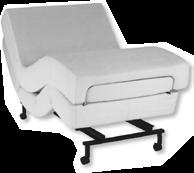
Happiness,

A sales person will be present with information and applications. For accommodation of persons with special needs at sales meetings, call 352-236-7674, TTY 711. Plans are insured through UnitedHealthcare Insurance Company or one of its affiliated companies, a Medicare Advantage organization with a Medicare contract and a Medicare-approved Part D sponsor. Enrollment in the plan depends on the plan’s contract renewal with Medicare.
Y0066_180221_023118 Accepted SPRJ40652
42 healthyliving magazines.com NOV ’18 Improve Your Life, Mobility, Strength, Immune System, Well-Being,
Stress, Sleep Quality, Healthy Digestion, Circulatory System, and Mental Focus. DECREASE: Pain, Disease, Illness, Aches, Injuries, Bad Posture, Depression, Prescription Drug Use, Anxiety, Fatigue, Insomnia and More. Se habla español 352-732-9355 DrOrta.com New Patient Special Offer
convenient way to shop for Medicare. MATTRESS MattressStore@MarketofMarion 12888 SE U.S. Hwy 441, Belleview, FL 34420 Hours: 9am-4pm, Friday-Sunday •AISLE B• 352-430-4100 Impossibly Low Prices! *Free delivery on scheduled delivery days in scheduled delivery area. $10 fuel surcharge. ADJUSTABLE BEDS One of the largest selections in Central Florida When do you want to wake up comfortable? Impressively High Quality 10th ANNIVERSARY SALE NOW Take an additional $25 OFF every $100 you spend! Take it off the sales prices on all mattresses, sets and adjustable beds, too!
A

Sources: newser.com, jamanetwork.com, bdd.iocdf.org PAGE 43
don’t play with video game addiction
In June, the World Health Organization o cially declared video gaming disorder a diagnosable condition in the 11th edition of their International Classification of Diseases. What does video game addiction look like, who is susceptible and what should parents be watching out for?
› By Katie McPherson
“Alright, shut o the PlayStation. It’s time for bed.”
“Mom, just 10 more minutes!”
“You’ve already been playing for hours. That’s enough already!”
This scene probably unfolds in many homes each night, and although most kids ultimately give in, some may give parents a much bigger fi ght when video game time is up. In fact, just reading that video game addiction is a real diagnosis may send some parents into a panic about how much their child has been in front of the TV lately. But the WHO has specifi c criteria for determining whether your son or daughter is addicted or just plays games more than you may like them to.
So, what’s gaming disorder?
Gaming disorder is defined by the 11th Revision of the International Classification of Diseases, or ICD-11, as “a pattern of gaming behavior characterized by impaired control over gaming, increasing priority given to gaming over other activities to the extent that gaming takes precedence over other interests and daily activities, and continuation or escalation of gaming despite the occurrence of negative consequences.”
In order for a gamer to be considered an addict, these behaviors must be damaging to other areas of his or her life: falling behind in school or at work, trouble in relationships with friends or family and irresponsibility with other daily activities, like sleep or personal hygiene. This must go on for at least 12 months.
The American Psychiatric Association has proposed more guidelines, saying the WHO’s standards may be too vague and cause more people to be diagnosed than is accurate. In

vibe HEALTHY
44 healthyliving magazines.com NOV ’18
2013, the APA added internet gambling disorder to their Diagnostic and Statistical Manual, or DSM, but left out gaming disorder pending further research.
The DSM-5 says aside from causing impairment in the gamer’s life, symptoms of internet gaming disorder include:

› Continuing to game despite problems
› Deceiving family members or others about the amount of time spent on gaming
› Inability to reduce playing, unsuccessful attempts to quit gaming
› Increased tolerance, the need to spend more time gaming to satisfy the urge
› Loss of interest in previously enjoyed activities due to gaming
› The use of gaming to relieve negative moods, such as guilt or hopelessness
› Withdrawal symptoms when gaming is taken away or not possible (sadness, anxiety, irritability)
Should all people who engage in gaming be concerned about developing gaming disorder?
How many hours per day should someone play video games?
Most physicians who have been interviewed about the topic agree that children should play no more than one to two hours per day. More than this on weekdays would likely infringe on homework and sleep time, but on weekends, parents may choose to allow more when gaming doesn’t interfere with other activities.
destress or enjoy downtime. WebMD does caution that some players who seem addicted may be playing games as a coping mechanism for depression, anxiety or other issues. If a loved one is using games to escape into another world or take a break from other issues, they may not need professional help for gaming addiction but rather to resolve those underlying issues.
games, don’t dismiss it as a phase, WebMD suggests monitoring your child’s behavior for a period of time. Keep good documentation of the child’s gaming behavior, including:
› Logs of when your child plays games and for how long
› Any problems resulting from or activities missed because of gaming
› How your child reacts to time limits or having games taken away

The WHO estimates less than 3 percent of gamers are addicted, and a study published in American Journal of Psychiatry in March 2017 found only 0.3 to 1 percent might be addicted. Studies have also found the overwhelming majority of video game addicts are males under 30 years old. But both the WHO and the APA advise gamers to be aware of the amount of time spent playing games each day, especially if it leads them to ignore responsibilities or engage in other activities. Changes in physical or mental health, such as weight gain or isolation, can also be signs that gaming is becoming disruptive to life.
Can gaming be beneficial?
Like most hobbies, gaming can be a helpful way to
How can parents better monitor their child’s game time?
Parents may also benefi t from keeping gaming systems in communal areas, like a living room, rather than in the child’s bedroom to make enforcing time limits easier. If you are concerned about the amount of time your child spends playing games or have noticed unhealthy habits surrounding gaming, talk to their pediatrician and ask their recommendations. Sources:
If you’re concerned your child may be addicted to video
NOV ‘18 › healthyliving magazines.com 45
who.int, psychiatry.org, webmd.com
practical packing
tricks to pack more e ciently, leaving no pants behind or gloves unaccounted for.

Decide what not to pack. The first step is to pick out some of your heaviest and bulkiest pieces, like tall boots, and see whether you can carry them outside of your suitcase. The best strategy is to layer pieces on your body and carry a large coat. If flying, this reduces the weight of your suitcases and can provide some added comfort for the plane ride.
› By Lisset Lanza
When packing for a wintertime vacation, suitcase space often fills up fast. Instead of packing less, it only takes a few tips and
Invest in a quality suitcase. A proper suitcase is sturdy and performs well. The wheels are smooth and easy to navigate, and the casing is protective. We recommend a model like the DELSEY COMÈTE 2.0. Its durable exterior resists scratches, while its interior

can be expanded for even more storage. The handles ensure a comfortable grip for easy mobility. DELSEY knows luggage. A French company since 1946, many swear by its baggage, which promises a sleek design that won’t break the bank.Try this one: DELSEY COMÈTE 2.0 28 inch, $129 › shop.delsey.com
Use organizers. You should always choose what to bring strategically, by narrowing down pieces that can be mixed and matched and minimizing your pairs of pants. If everything you’re packing is a must-bring item, though, the solution may be to buy spacesaving bags. These air-tight plastic baggies are sealed with
Roll, don’t fold. Rolling your clothes up rather than folding them is a simple hack that makes all the di erence. Tightly rolled clothing can be stacked, squeezed and sorted easily. Some people swear by securing rubber bands around the clothing to further free up room in the bag.
Tuck away. Stu mittens and socks in shoes. Making use of every inch will save space for last minute additions and leave wiggle-room if items need to be rearranged. If taking home souvenirs or bringing home fragile items, use scarves and soft fabrics as a protective cushioning.
46 healthyliving magazines.com NOV ’18 vibe HEALTHY
Packing for winter travel can be stressful.
Bulky coats, boots and snow apparel can mean a lot of suitcases and hefty airline baggage fees. Pack smarter with these tips.
Sources: mentalfl oss.com, whowhatwear.com
a vacuum and the ultimate method to maximize space.
popular podcasts
Stories to enjoy on long drives, lunch breaks and sleepless nights.
›
By Katie McPherson
Podcasts are one of the most rapidly growing ways of sharing news, information and entertainment. There’s a genre for everyone and each podcast within it has a distinct personality. Some have risen to the top and keep listeners coming back each week.

lore
Good storytelling is an art, and Aaron Mahnke takes ancient folklore and modern urban legends to new heights. Lore covers sightings and stories of monsters, illnesses, everything eerie and—we can only hope— things imaginary or in the past.
Must-listen episode: “Episode 53: Trees and Shadows,” about a werewolf-like creature that will have you eyeing the roadside on dark drives home
terrible, thanks for asking
episode leaves the listener with some invaluable life lessons.
stuff you hould know
Need a digest explanation on literally anything? Josh and Chuck are senior editors at HowStu Works.com and explain everything from complex theories of logic to why walruses are so stinkin’ adorable.
Must-listen episode: “The Dyatlov Pass Mystery,” on why a group of frozen Russian hikers have fascinated the world for years

Do you love grieving and heartache? Neither does author and hilarious host Nora McInerny, but she became famous for it after her husband died of brain cancer and her obituary for him went viral. On her podcast, she interviews people who have gone through unimaginable things. If you ask them how they are, their honest answer would be, “Terrible, thanks for asking.” But each
Must-listen episode: “Route 91,” where Nora interviews a survivor of the Las Vegas Route 91 mass shooting criminal True crime fans will love Criminal, which covers every type of crime known to man. Host Phoebe Judge does thorough research and conducts heart-pounding interviews—sometimes with the victims and sometimes with the criminals.

Must-listen episode: “A Bump in the Night,” where Phoebe interviews a young woman who slowly realized she didn’t live alone in her new apartment
modern love: the podcast
Want to hear one of the internet’s most beloved New
York Times columns read aloud by celebrities or the essayists themselves? This is your pod.
Must-listen episode: “When A Couch is More Than A Couch,” in which a woman fixates on finding the perfect couch to cope with her recent cancer diagnosis
sawbones
If you like all those TLC shows about medical oddities, here’s a podcast on the strange-butreal history behind modern medicine. Dr. Sydnee McElroy serves up the knowledge, and her layperson husband, Justin, asks the hilarious questions.

vibe HEALTHY
NOV ‘18 › healthyliving magazines.com 47
purses with a purpose
The women behind Livin’ the MAD Life are a mother-daughter duo who have intertwined their passion for sustainability and women’s rights with a brand that stands for compassion and stylish accessories. Mother and founder Megan Duncanson is the artist responsible for the lively, intricate designs painted on the bags, while co-founder Aroon Duncanson works to market and showcase the purses.
Megan’s love and knowledge for the empowerment of women and Aroon’s interest in a sustainable fashion brand mean that these purses are special. Their design is unique in that the bags are entirely vegan and cruelty free, meaning they are not made from animal products or by-products such as reptile skin, wool, fur or animal hides. Much of the world’s pollution is due to the fast-growing fashion industry, in which garments are mass-produced with little regard for the labor conditions or factory e ects on the environment. Consumers soon discard the clothing pieces and move on to the next trend, and the cycle continues.
A portion of the proceeds
from Livin’ the MAD Life benefit two charities that were handpicked by the creators, so consumers’ support goes beyond just profits to a company. Check out some of our favorites. To see even more, visit livinthemadlife.com
finished with a sealant once the artist has finished painting, remember to handle with care.
“MAD Symbols” White Travel Bag

$300
,
These symbols, freedom and the idea that true love comes from within, serve as messages of positive a rmation with every look at the pattern.
“Aqua Burn” Pleather Tote Bag, $250
The “Aqua Burn” design is an original art piece with sturdy hardware and a comfortable strap.
The tote has plenty of storage and easy-access slip pockets. Although the bag is


“Power and Strength” Canvas Tote
, $325
Inspired by the life and spirit of legendary female Mexican artist Frida Kahlo, this purse is conveniently constructed with easy-to-reach pockets and
adorned
MAD symbols of power and strength.
“Summer Citrus” Classic Handbag, $250
Part of the brand’s Miami Summer Collection, this handbag is vibrant, fresh and beautifully illustrated. Quality pleather meets a classic silhouette for a large capacity, everyday must-have addition to your outfit and routine.

48 healthyliving magazines.com NOV ’18 vibe HEALTHY
If you’re in the market for a new bag, we have just the one for you. Ethically made and created with love and a purpose in mind, Livin’ the MAD Life’s line of bags show that meaningful bags can and should be accessible to all.
› By Lisset Lanza
with

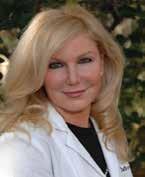


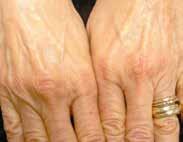



Deb Scott, LPN, LE Dermatological Nurse - Esthetician Over 25 years of experience OFMC Dermatology & Aesthetic Center Board Certi ed Emergency Medicin Fellowship Trained Mohs’ Surgeon Dr. Wallace is board certi ed in Dermatology is a fellowship trained Mohs’ Surgeon who specializes in the diagnosis, treatment, and prevention of skin conditions, diseases and cancers. He is also accepting new patients. MENU OF SERVICES: Clinical Acne Treatments HydraFacials (for ALL skin types) Oxygen Infusion Facial European Facials/Microdermabrasion Botox® (Allergan Cosmetic Grade) Facial Fillers: Restylane® and Perlane® IPL Photorejuvenation Packages Hand Rejuvenation Laser Skin & Wrinkle Reduction Treatments 352-368-1333 Free Open House Come meet our skin care experts and tour our o ce while enjoying refreshments! You will also enjoy 20% OFF all skin care packages and products purchased the night of the event! Enter to WIN 1 of 4 FREE door prizes! 2 skin care gift bags valued over $100 each 1 $150 Aesthetics & Laser Gift Certificate Monday, April 6th. To RSVP or for questions regarding this Date: ursday, April 9th Time: 4:00 p.m. - 7:00 p.m. BEFORE AFTER Serving you is a Blessing. Short-term therapy designed with quick recovery in mind. HAPPY THANKSGIVING Medicare, Tricare, Worker’s Comp & Most Insurances Accepted 352.873.7570 • 2800 Southwest 41st St. • Ocala, FL 34474 LifeCareCenterOfOcala.com
COGNITIVE IMPAIRMENT— EFFECTIVE TREATMENT BEGINS WITH THE RIGHT DIAGNOSIS


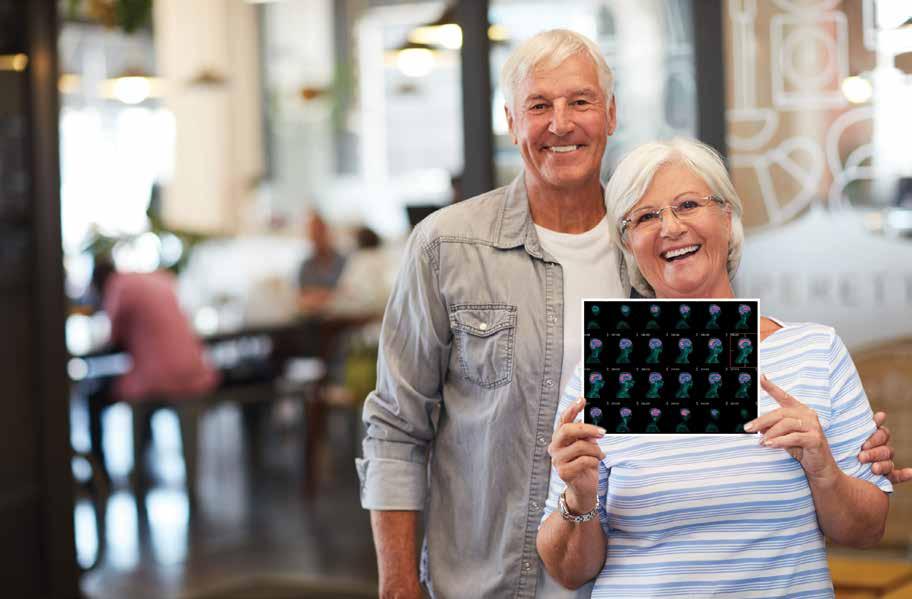
radiologist rule out Alzheimer’s when it is not the cause of cognitive impairment, and provide an accurate diagnosis, so appropriate treatment can begin.





A PET/CT scan from RAO provides more than information –it can give you peace of mind.


(352) 671-4300 •
We are proudly contracted with a variety of insurances and file all claims with the exception of non-contracted HMO's. Please visit our website for a detailed list of who we are contracted with. Contracted insurances are subject to change.
Board Certified, Fellowship-Trained Radiologists ACR Accredited - PET & CT
MEDICAL IMAGING CENTER AT WINDSOR OAKS
#DetectionSpecialists
PET/CT
rtified,
Fellowship-Trained
Radiologists (left to right):
Marion County’s only full-service imaging center, providing a full circle of care - centered on you.






































 ›
By Cynthia McFarland
›
By Cynthia McFarland
















































 ByNickSteele
ByNickSteele









 Erin Freel, Tim Reynolds and Nicolas Blaser
Photo by John Jernigan
Erin Freel, Tim Reynolds and Nicolas Blaser
Photo by John Jernigan






































